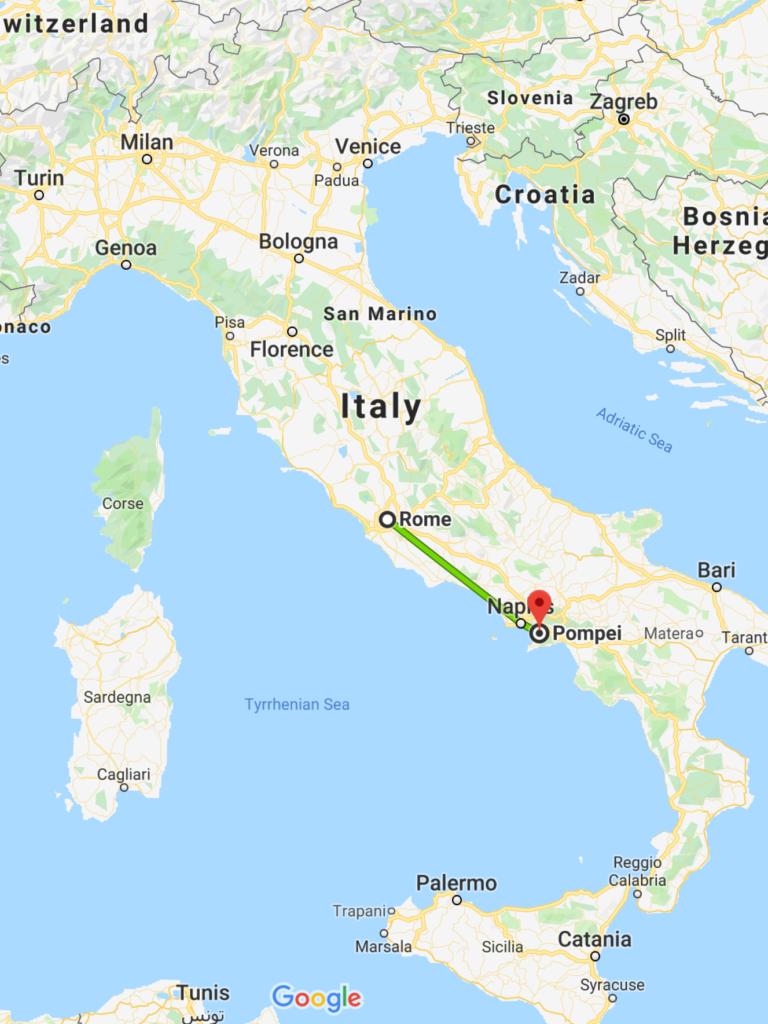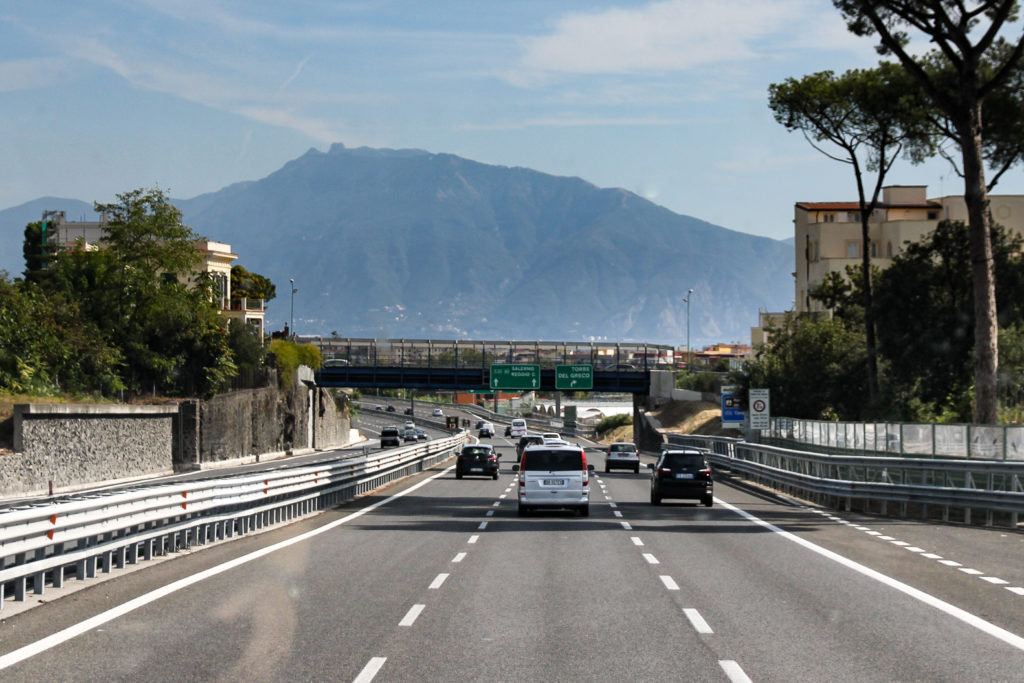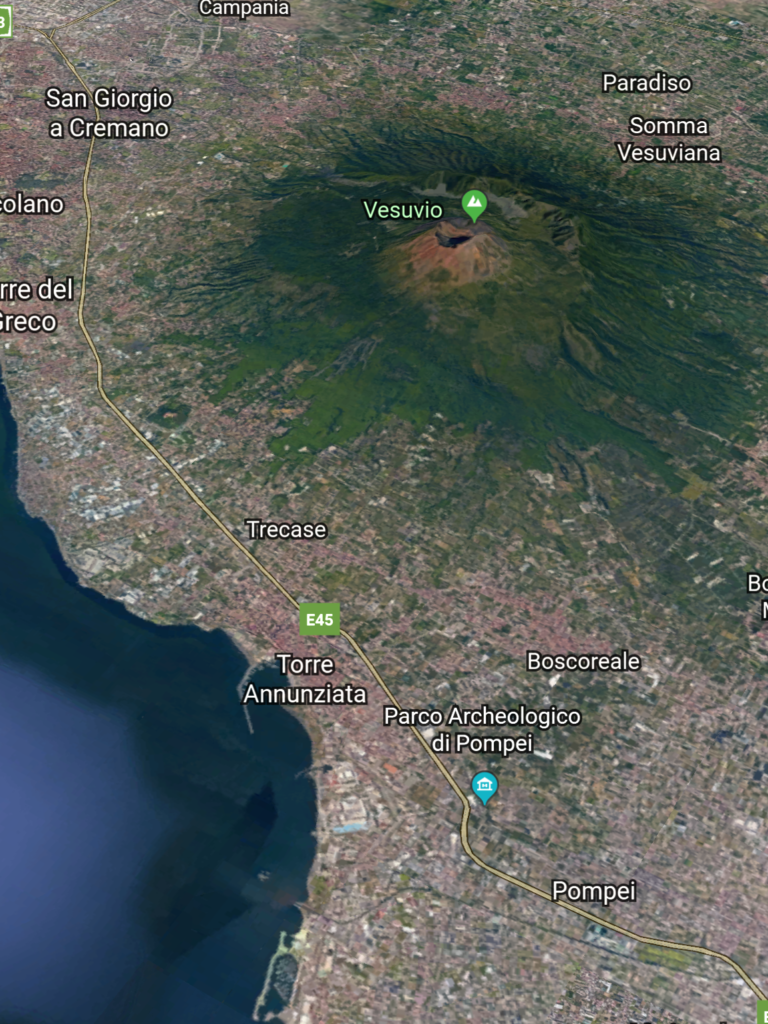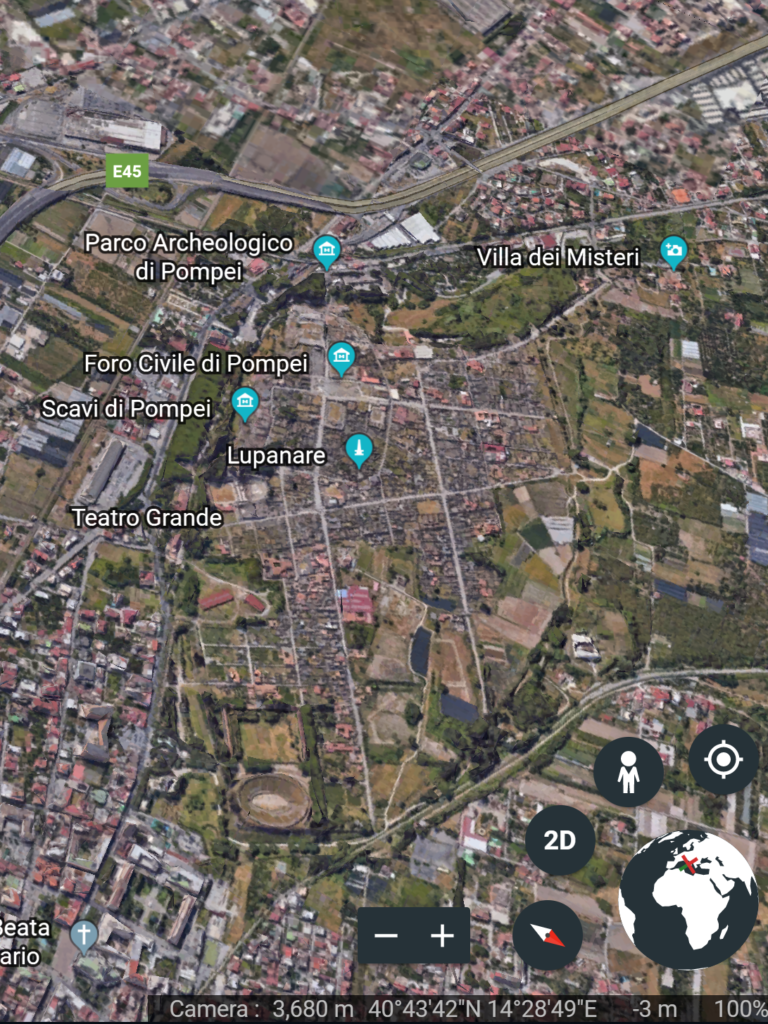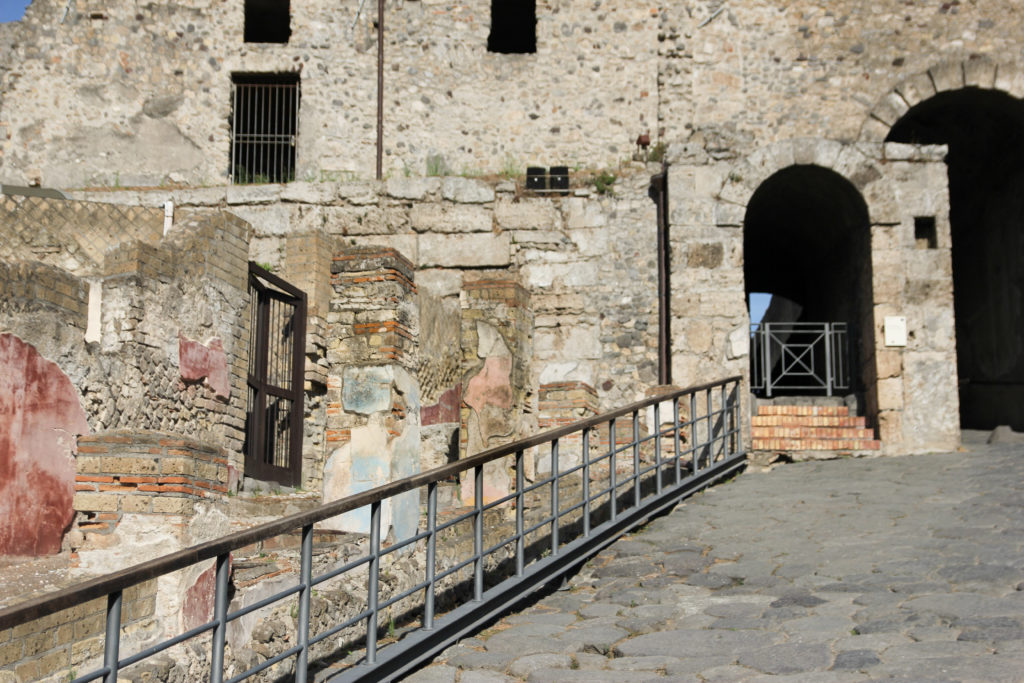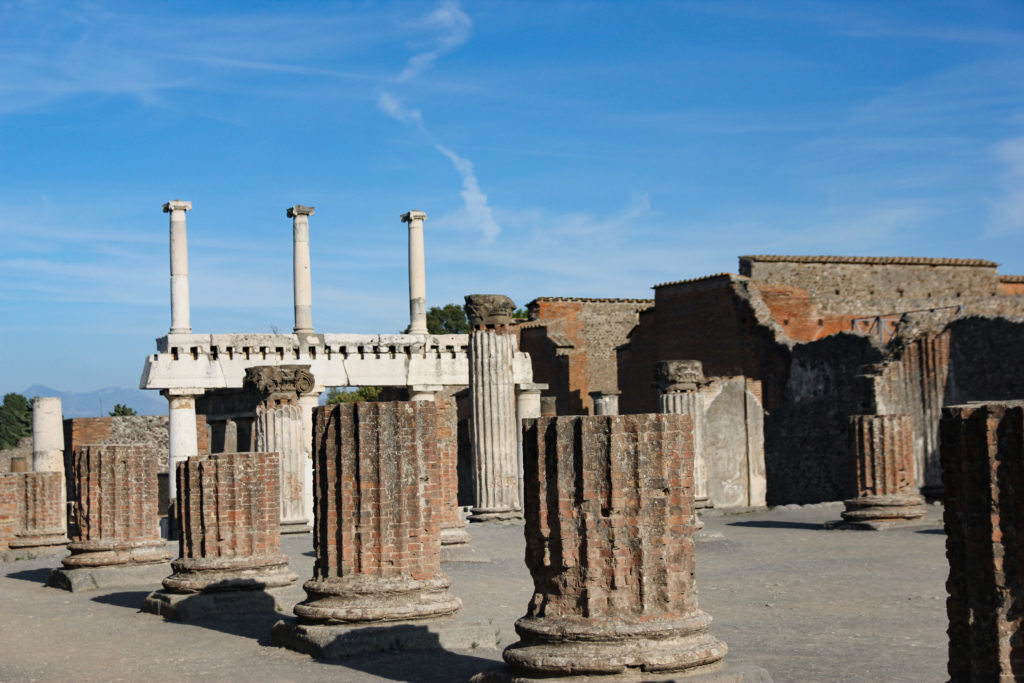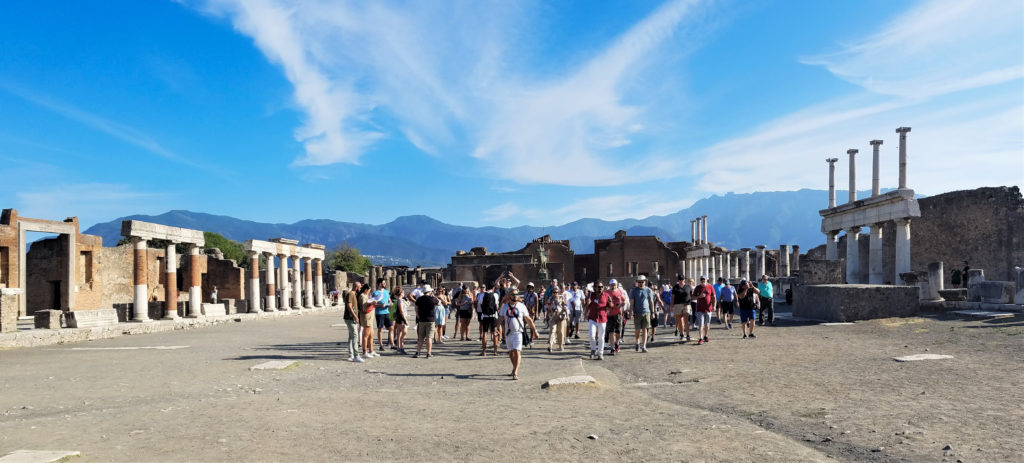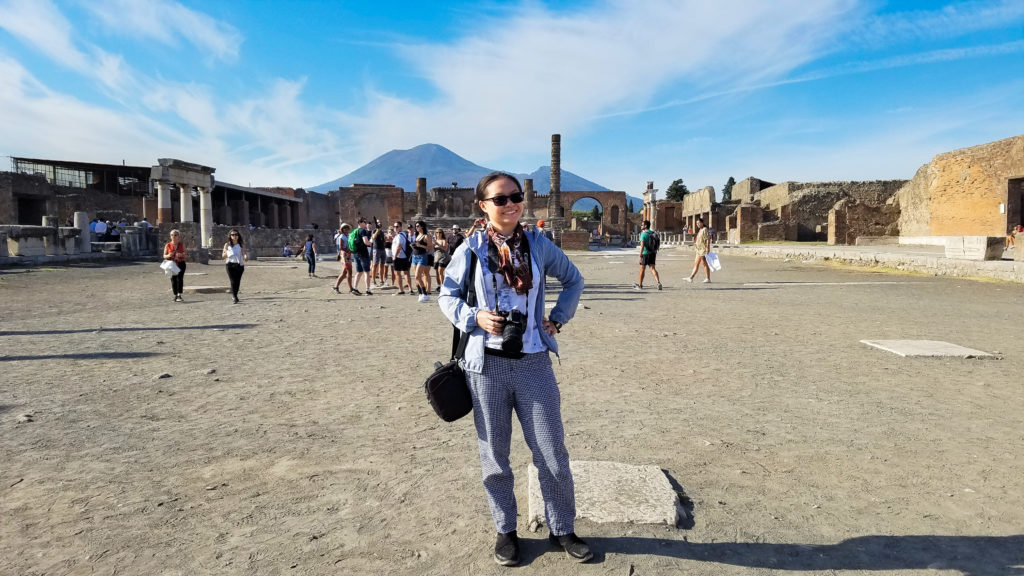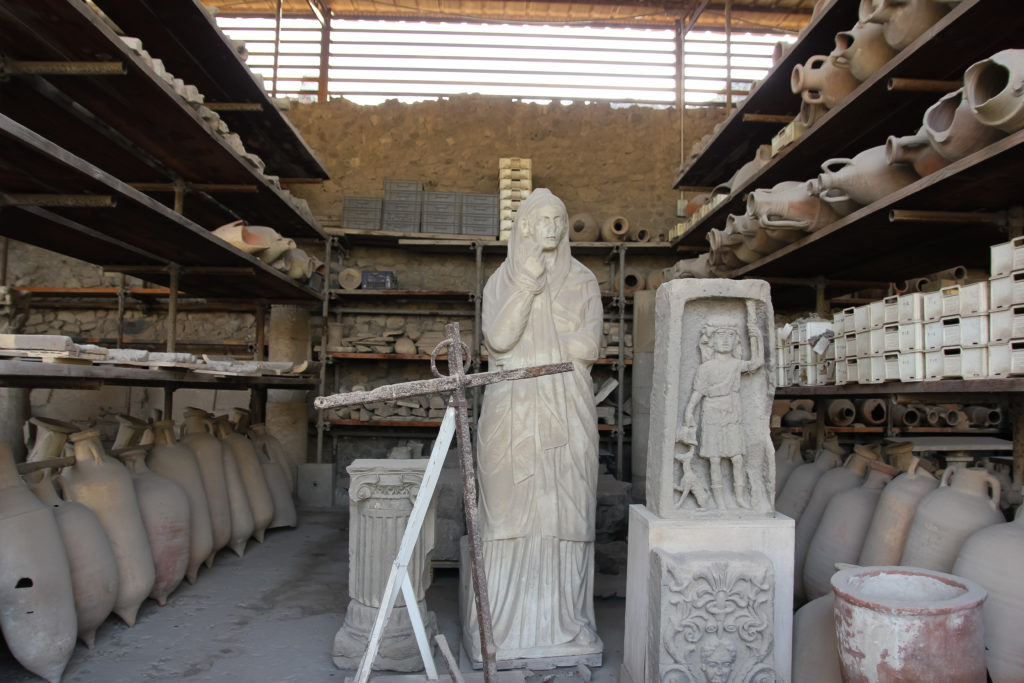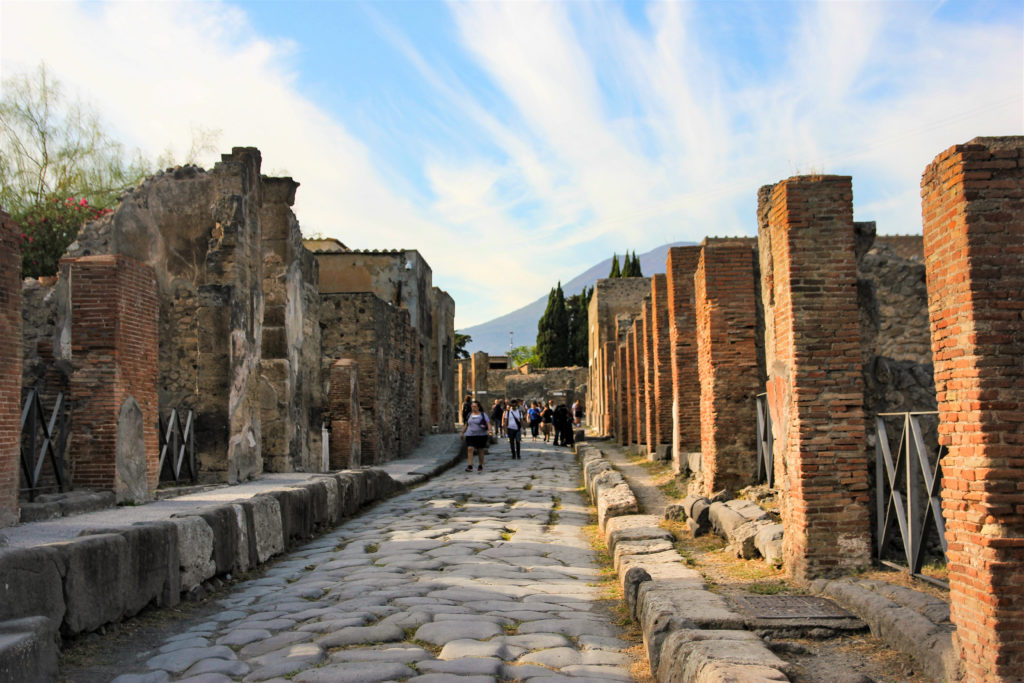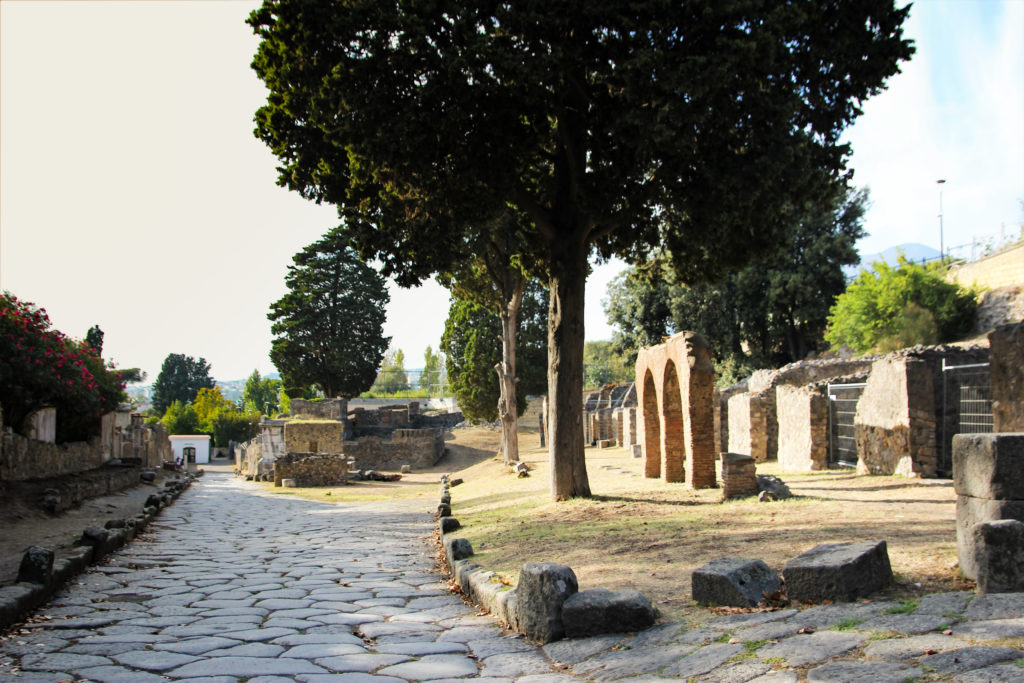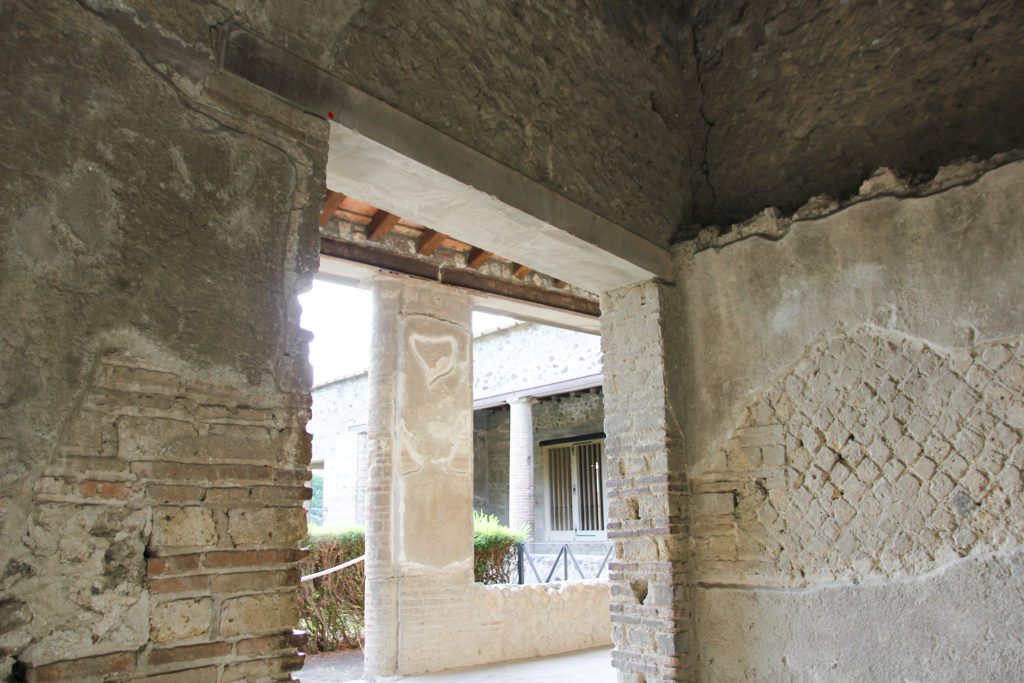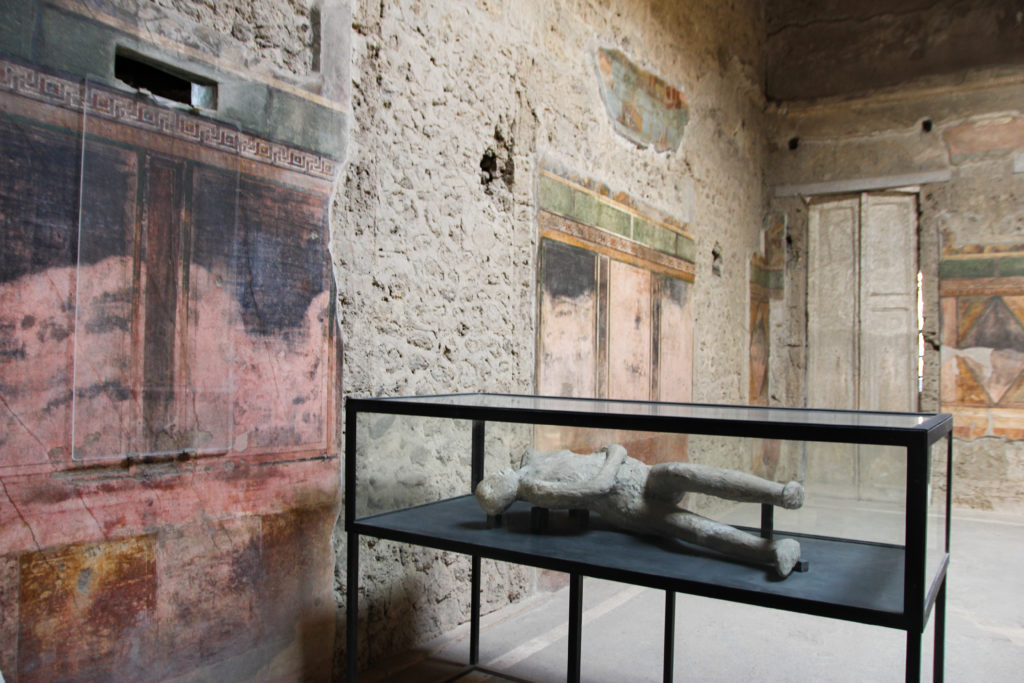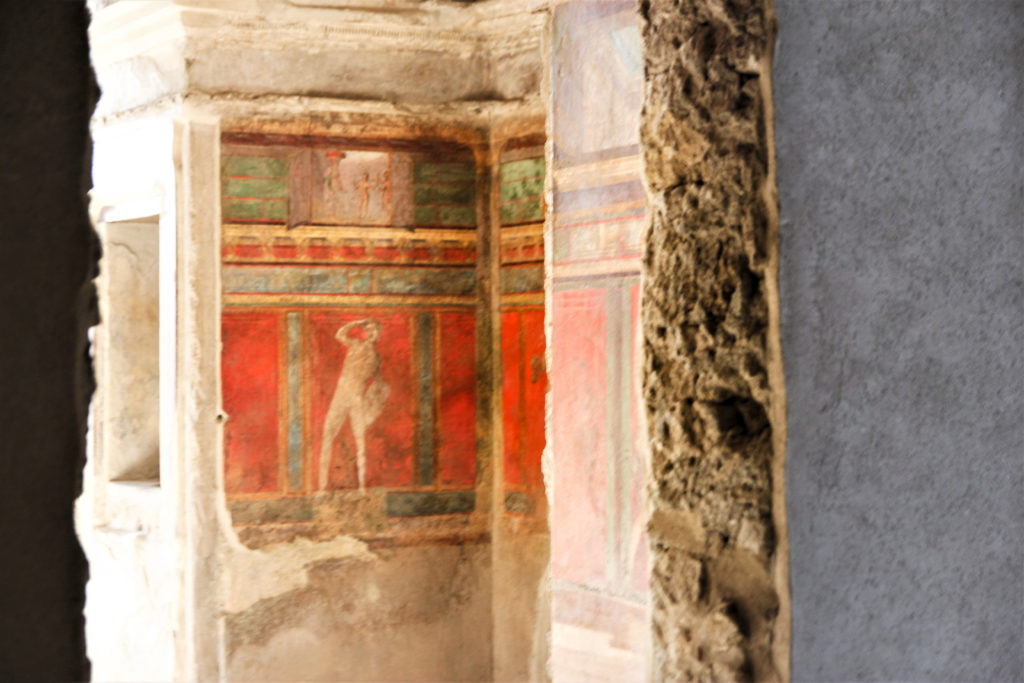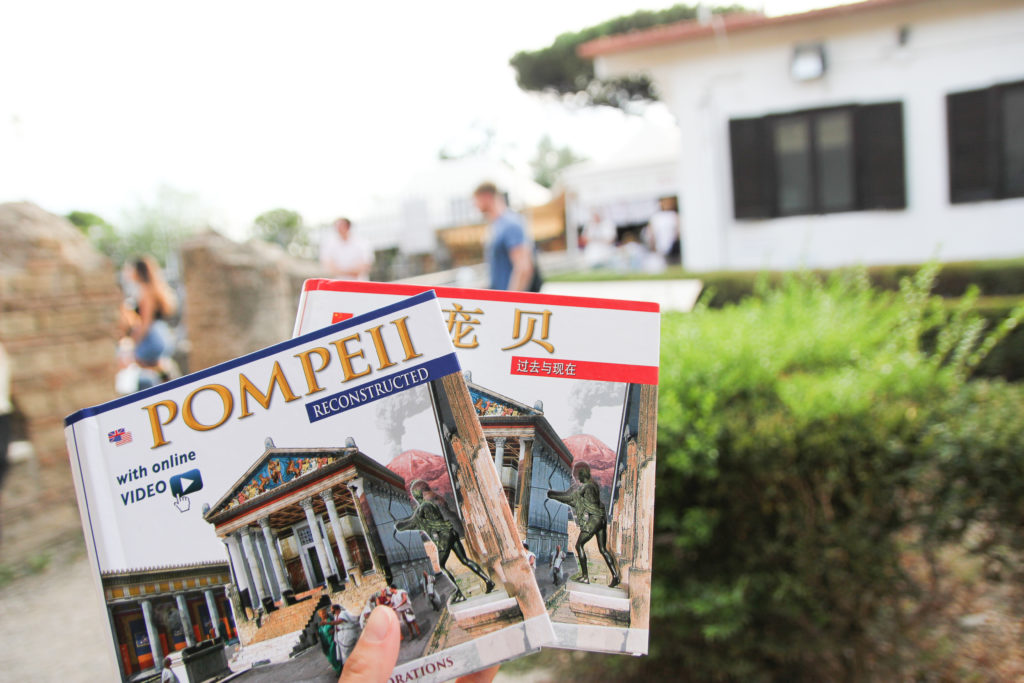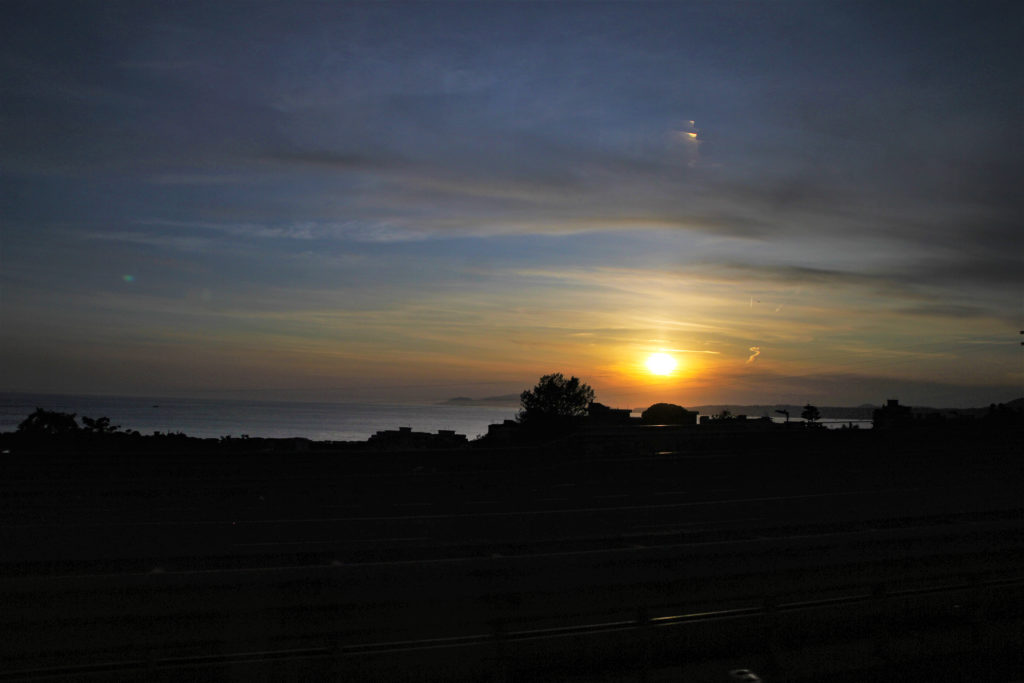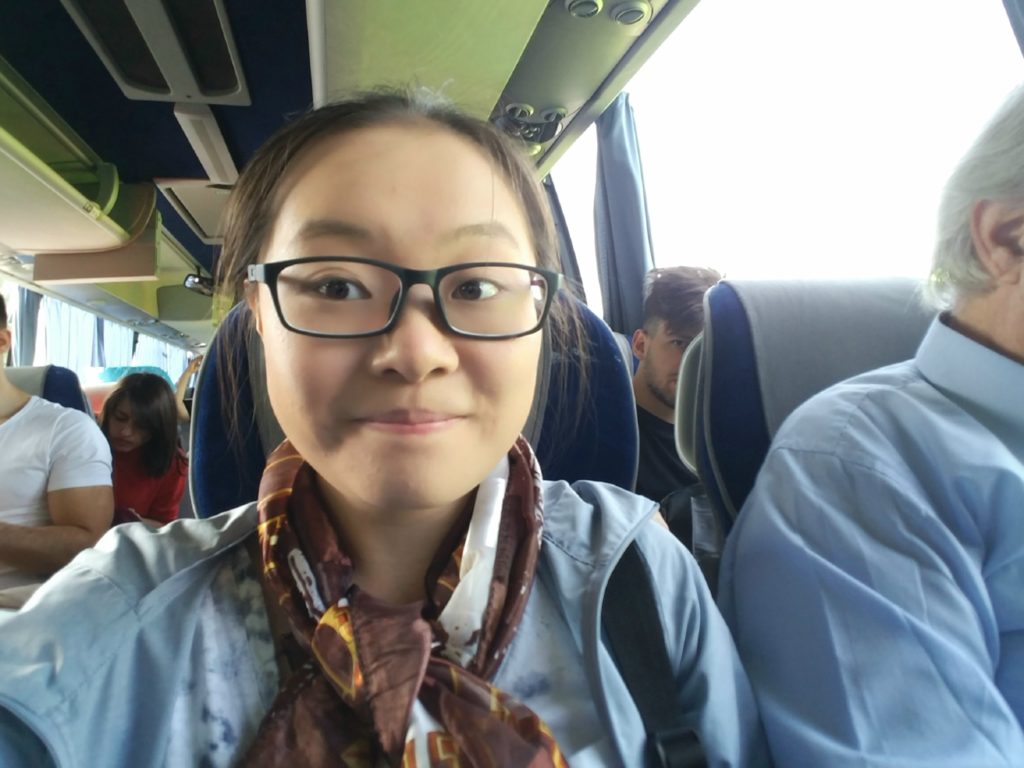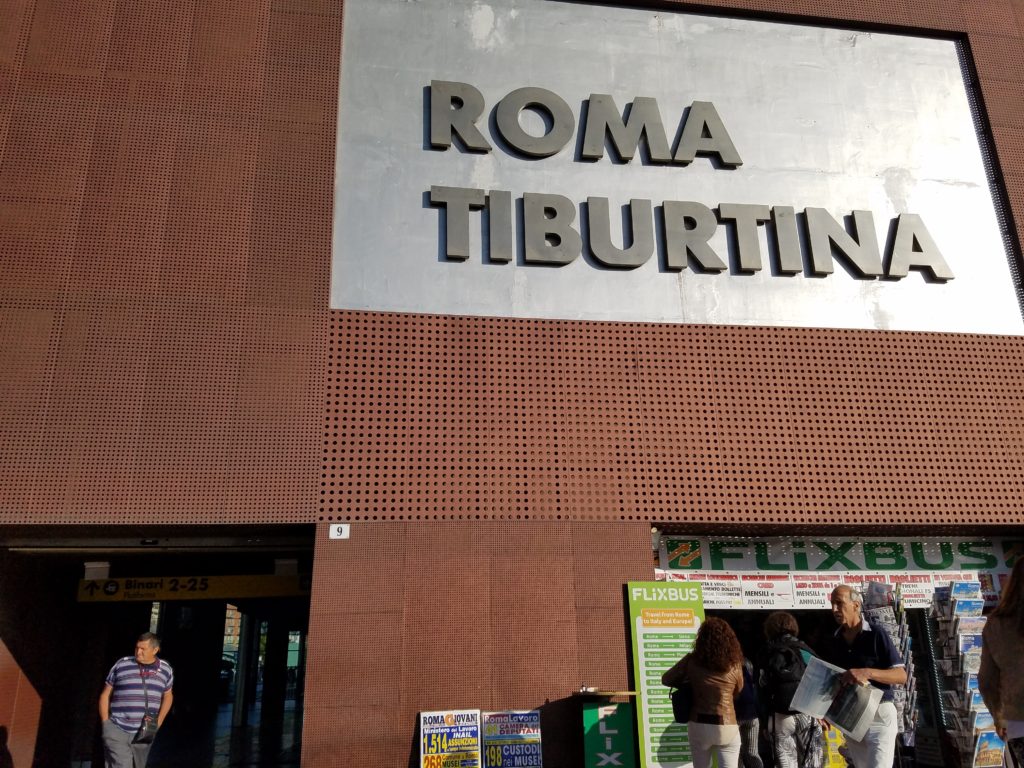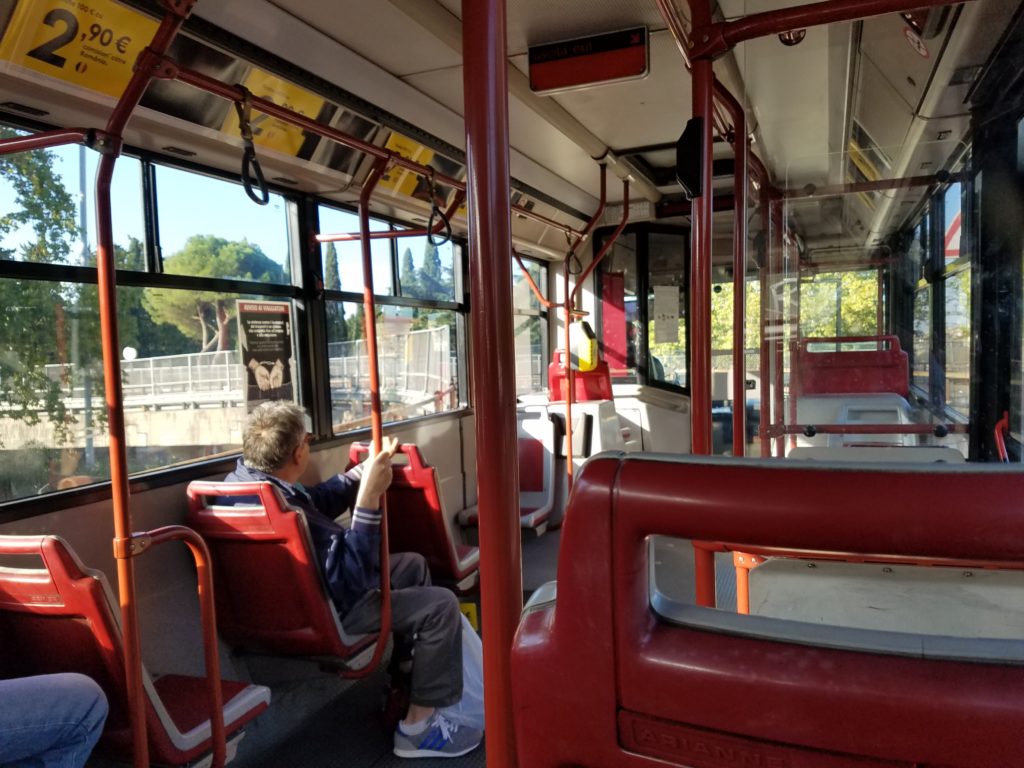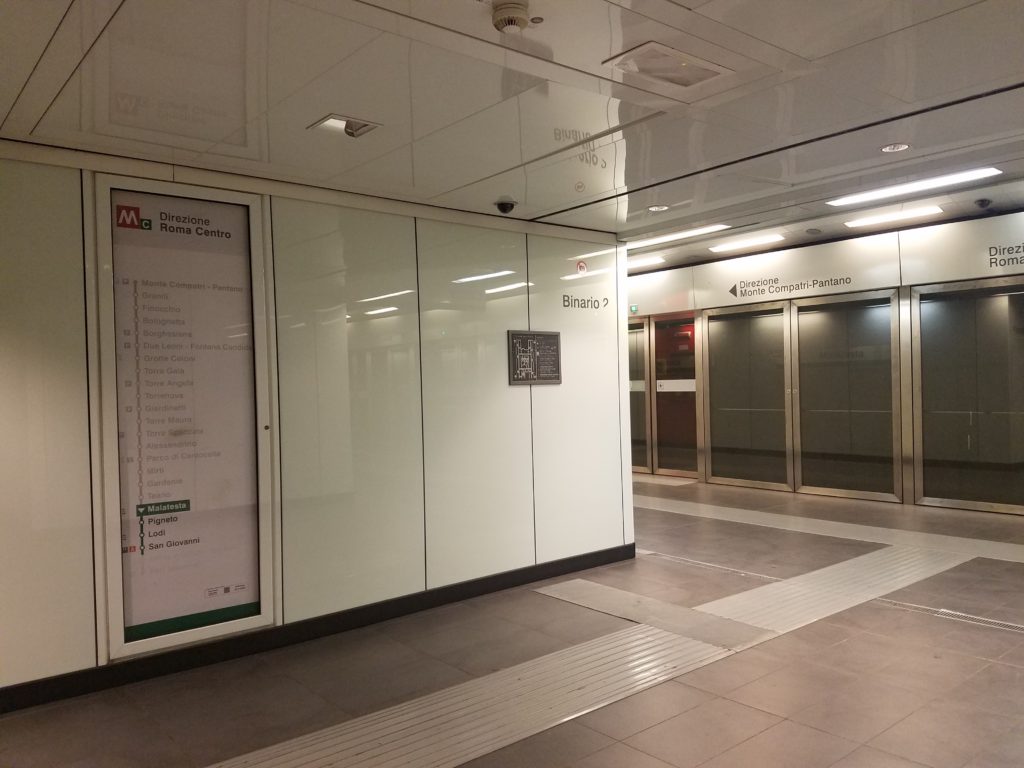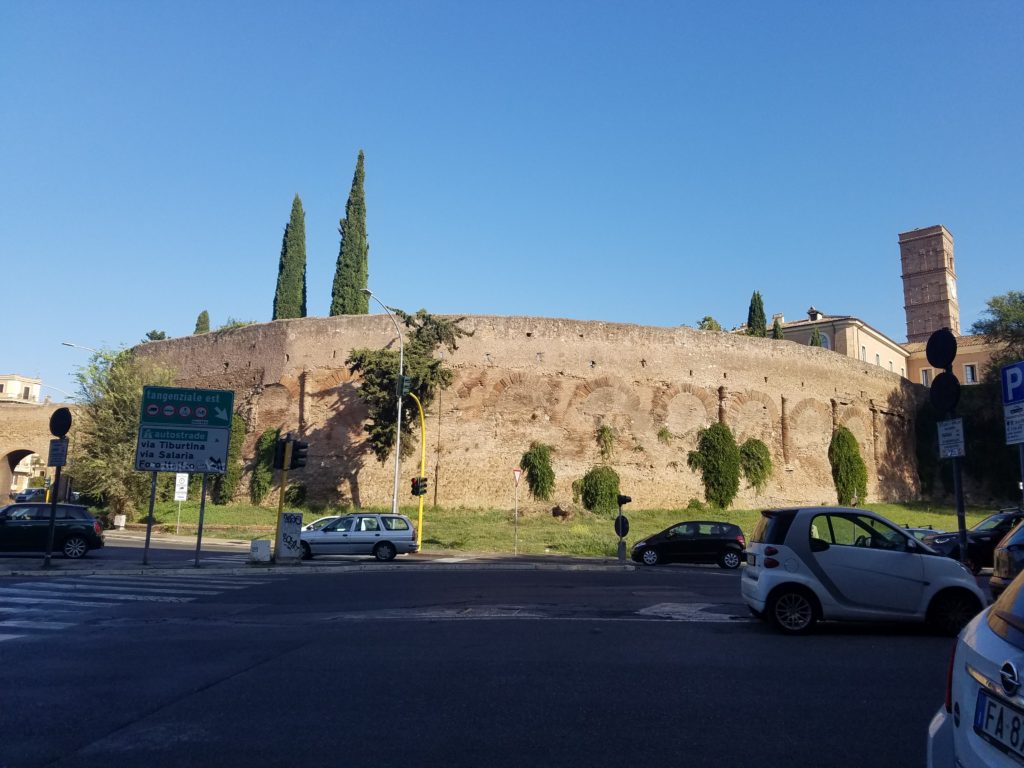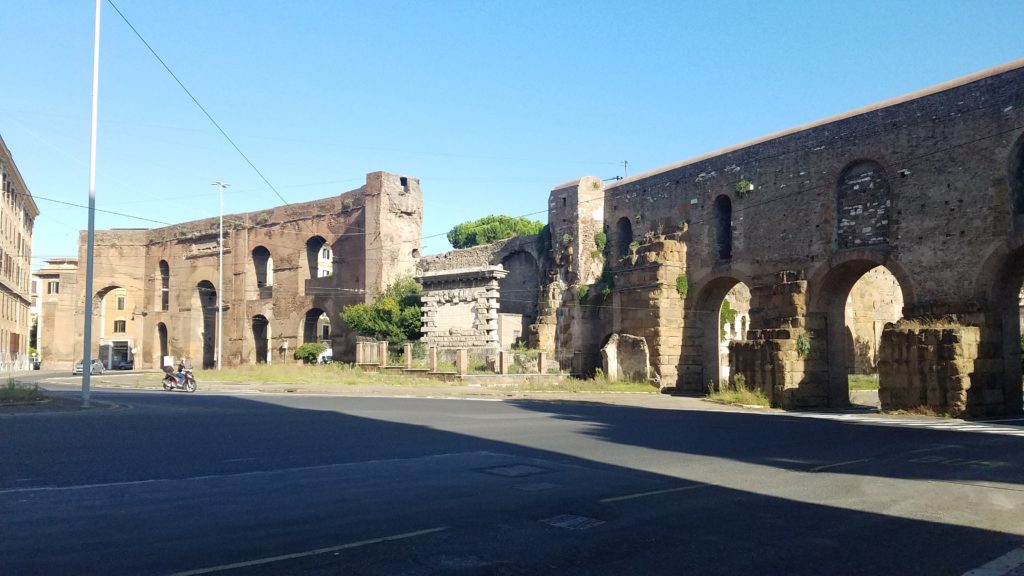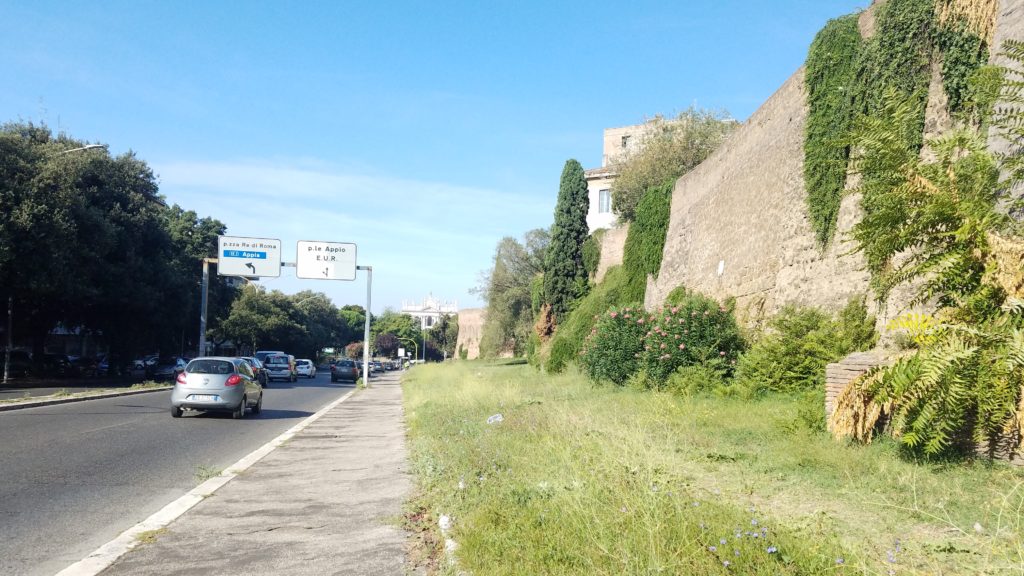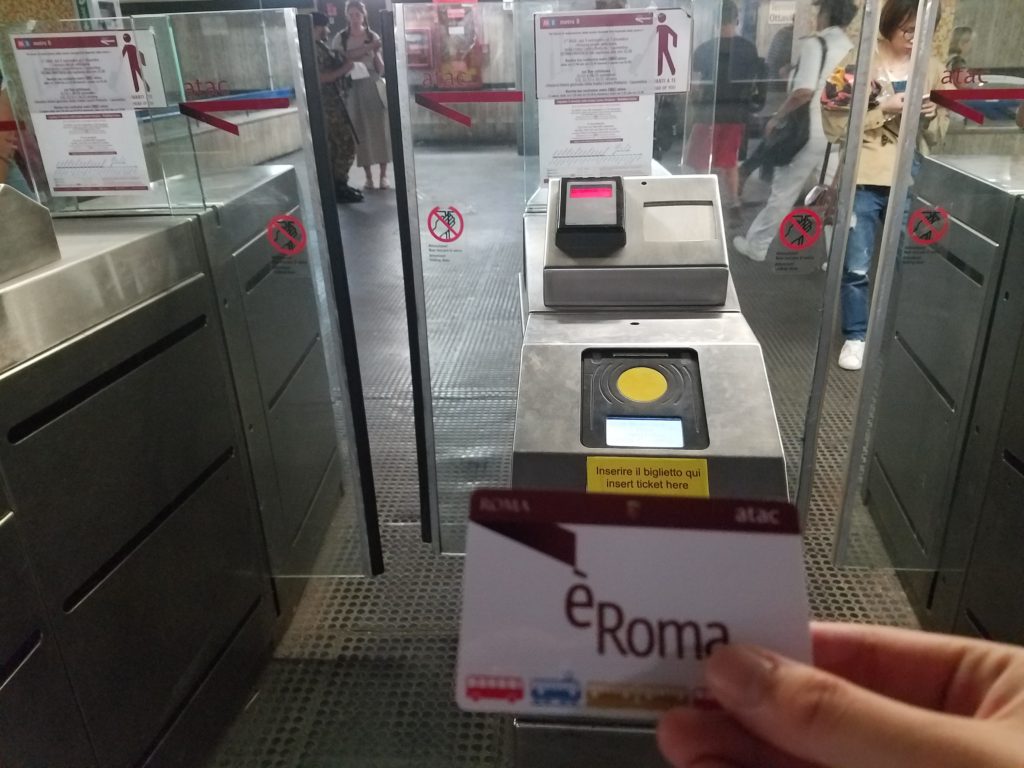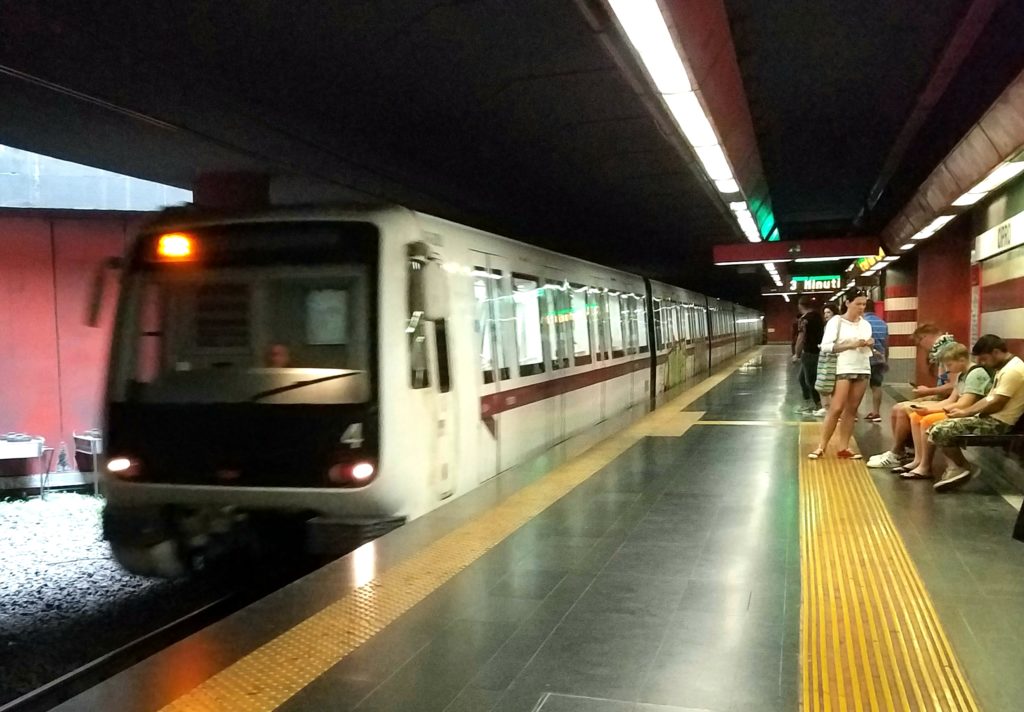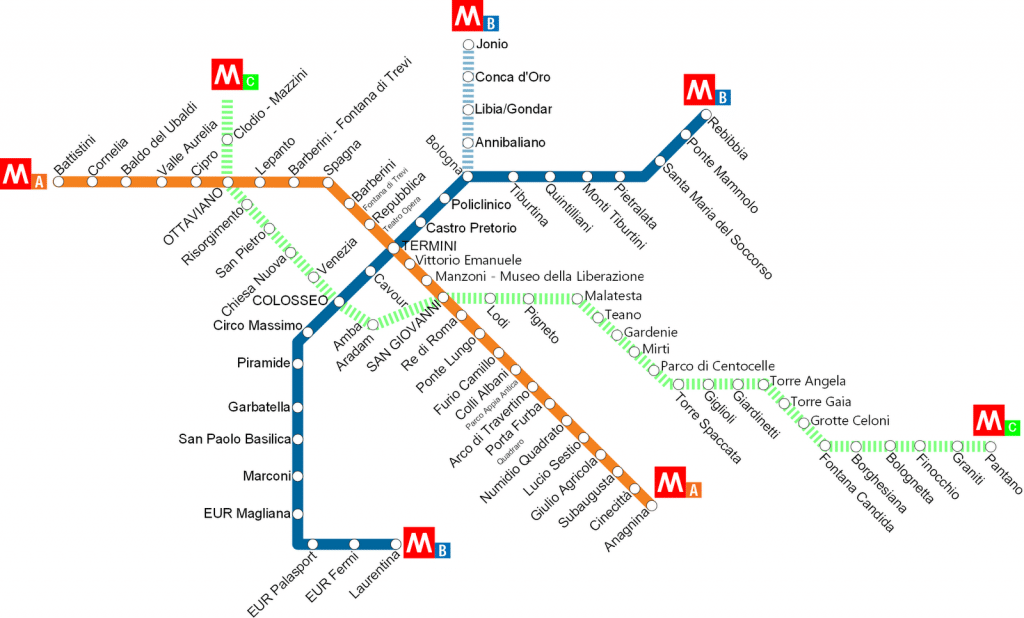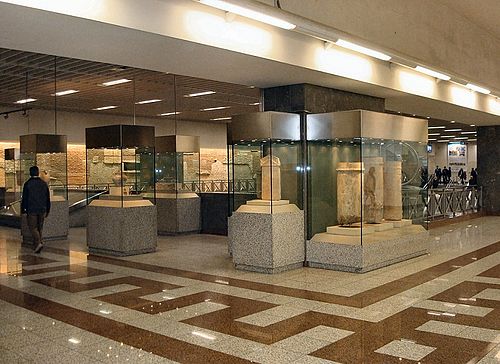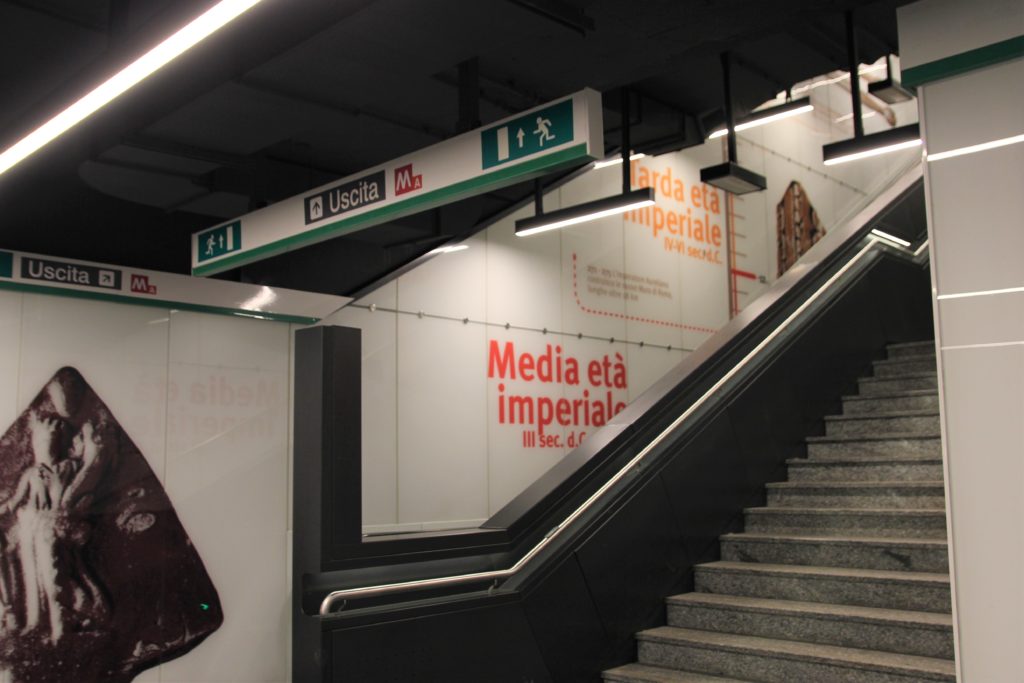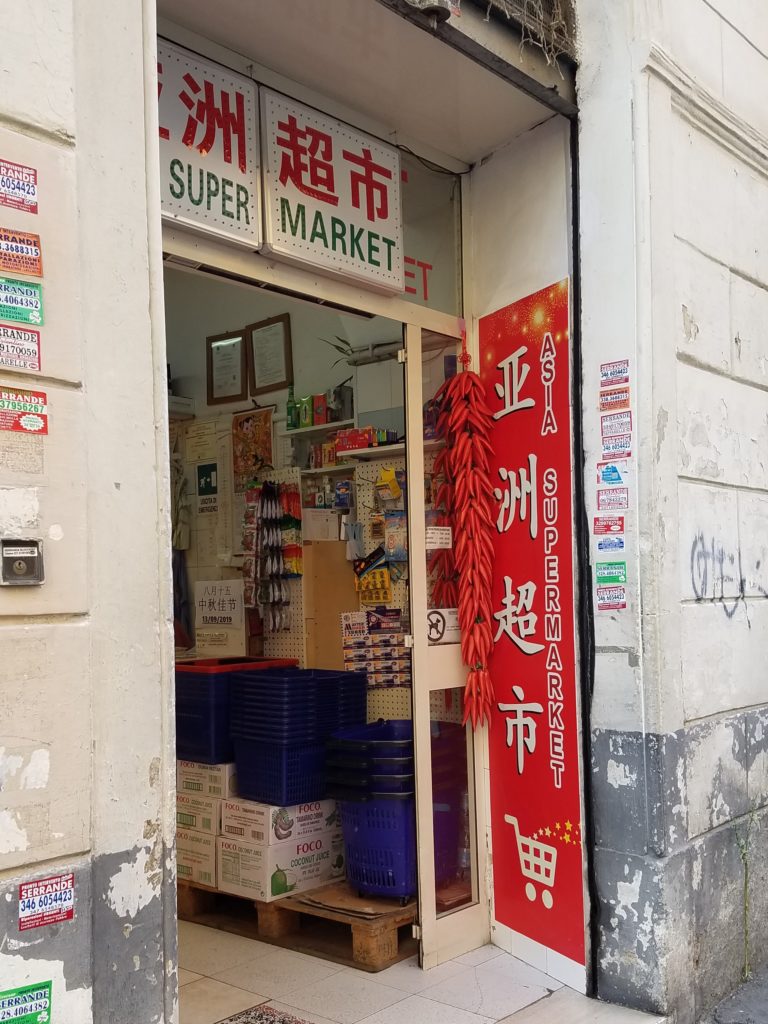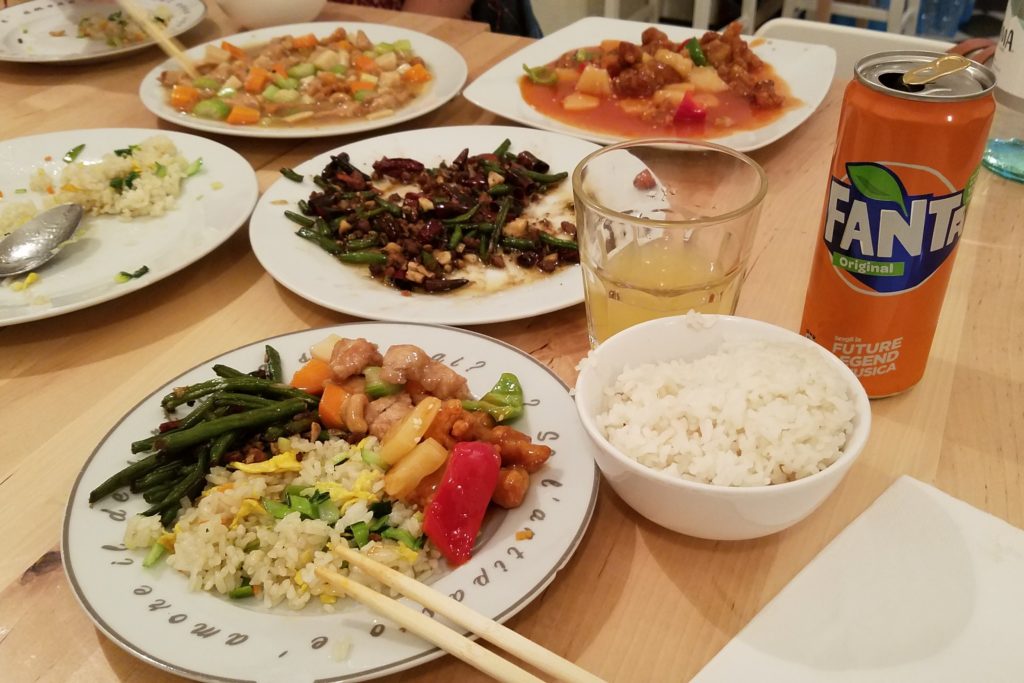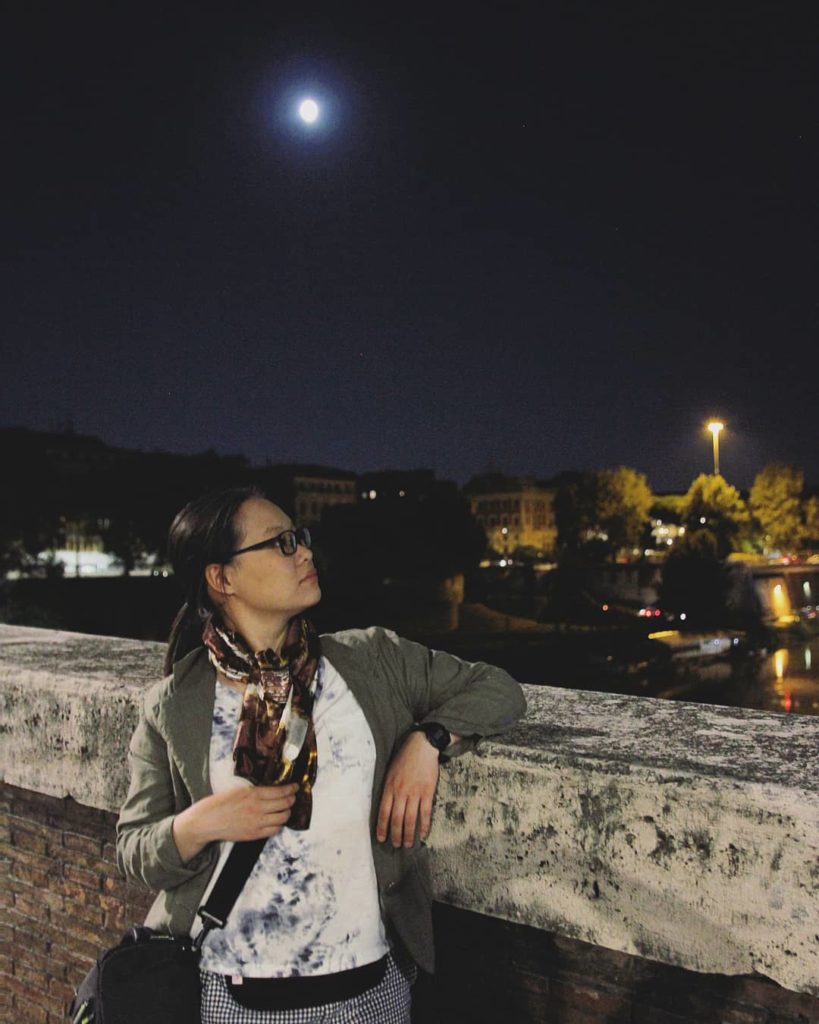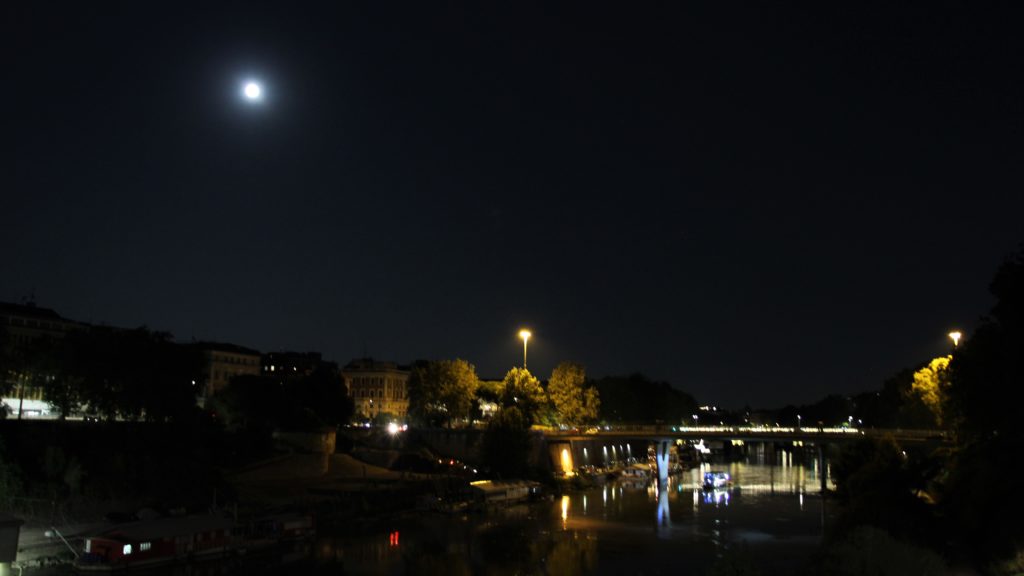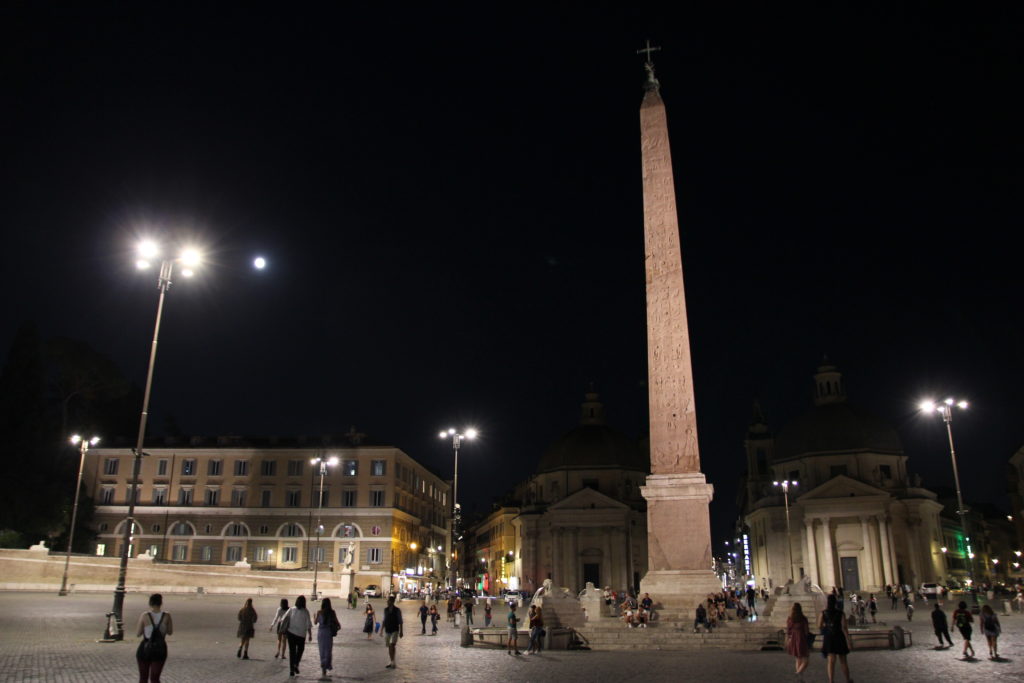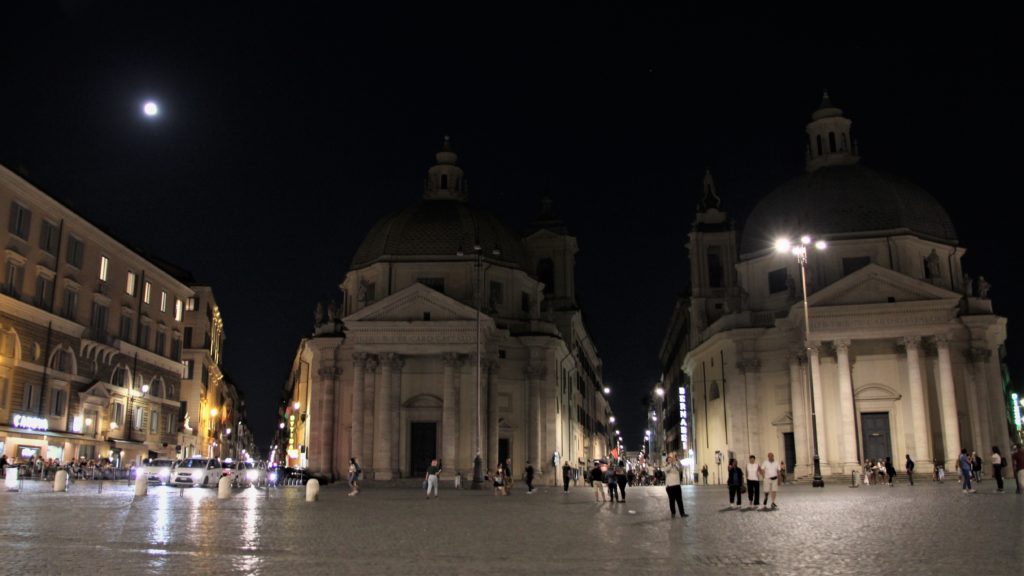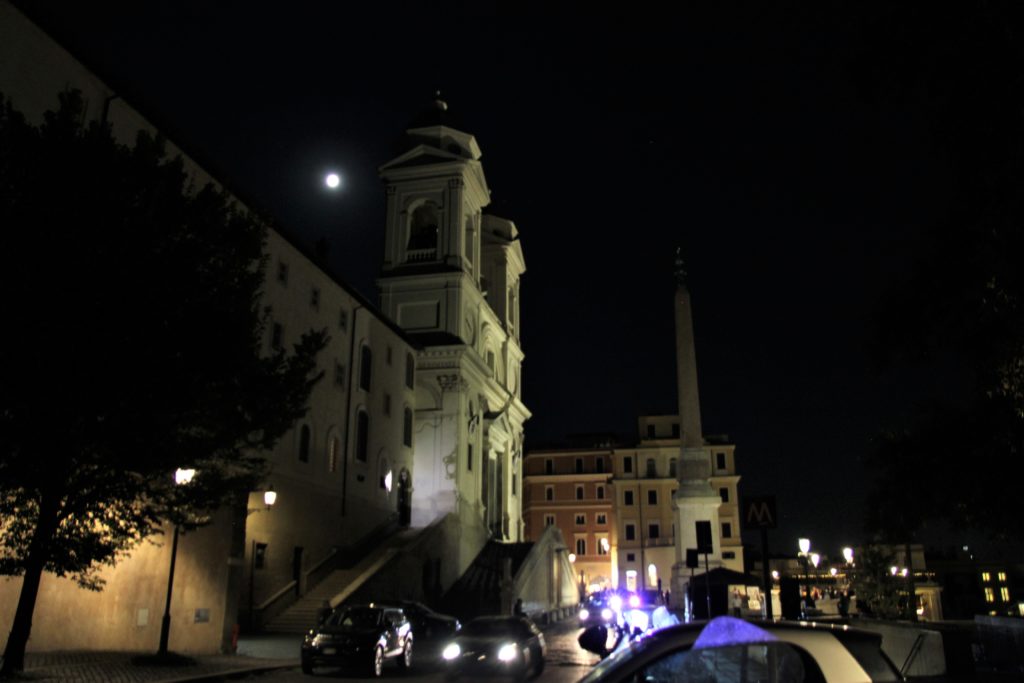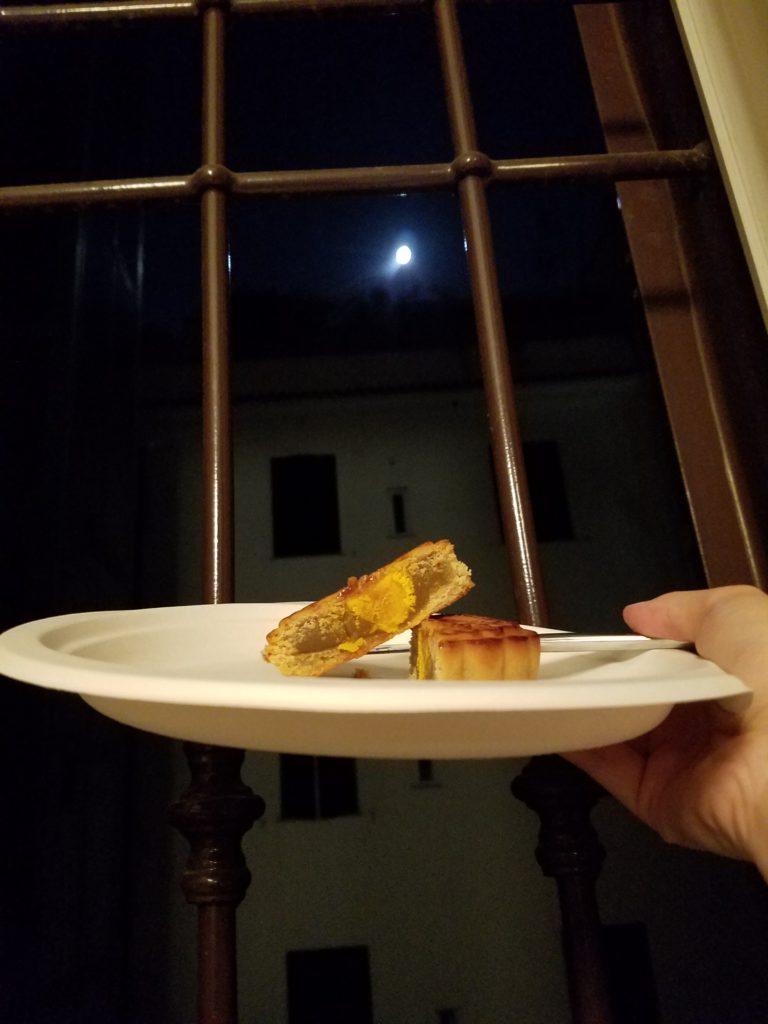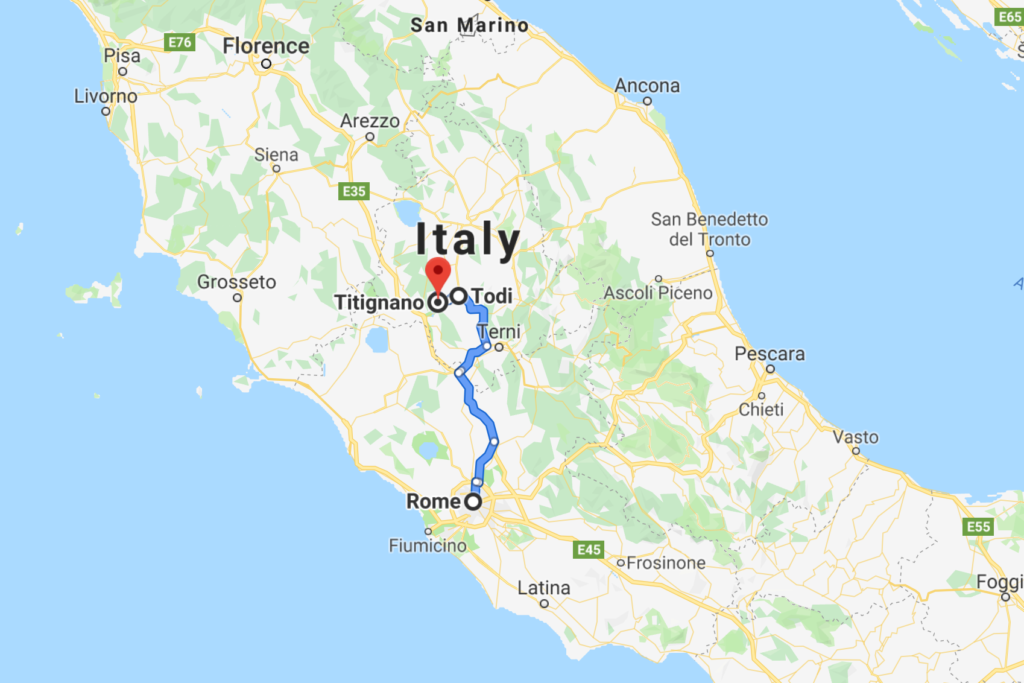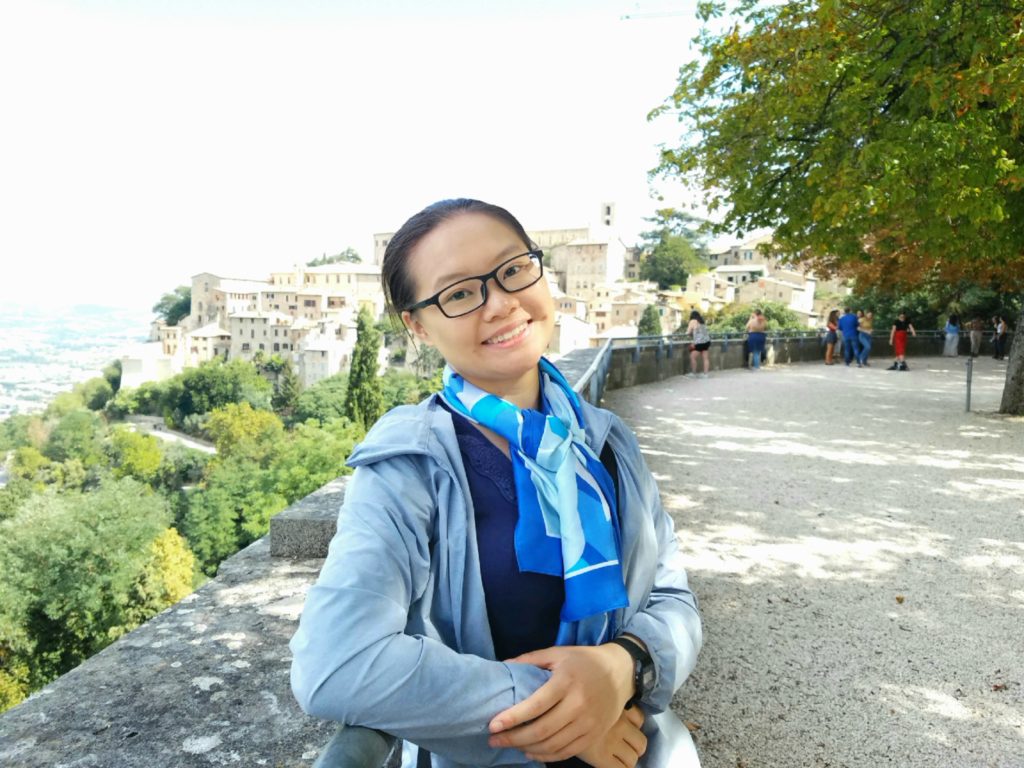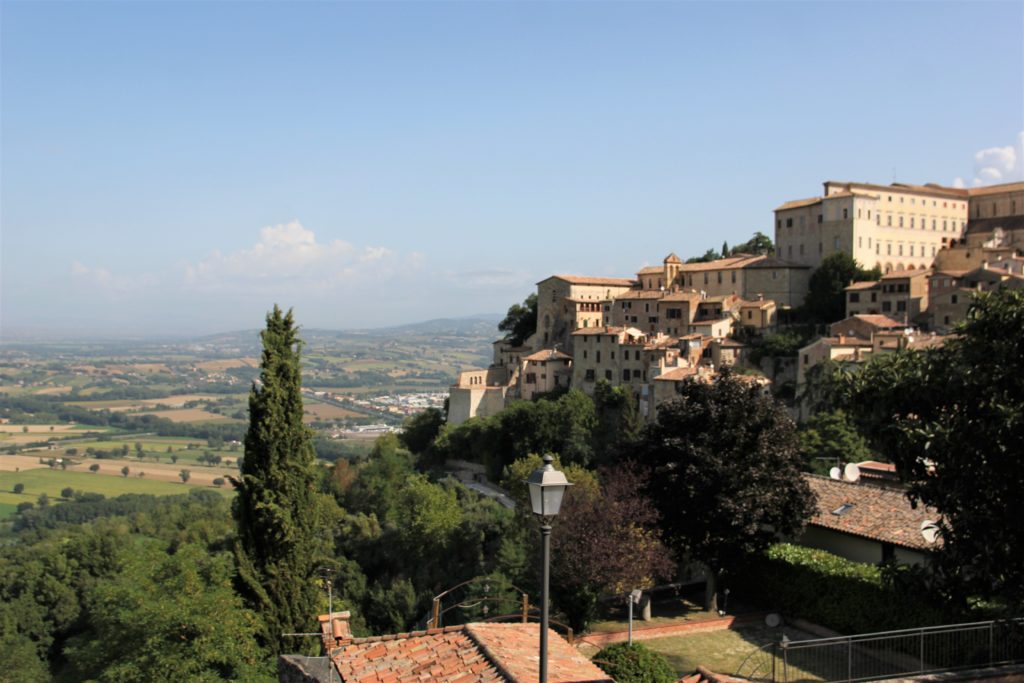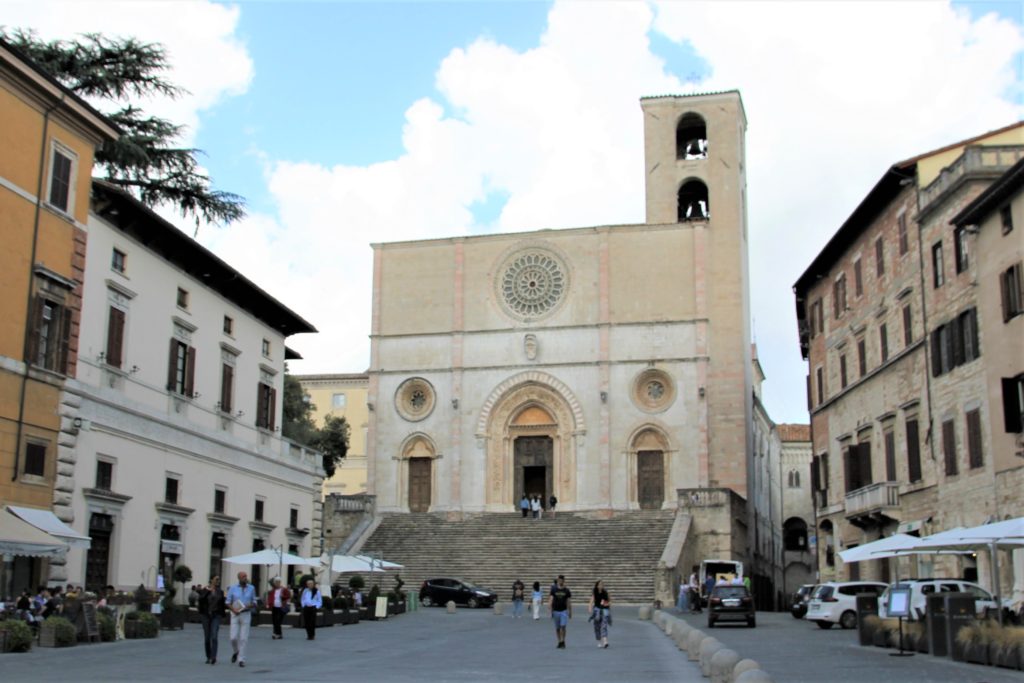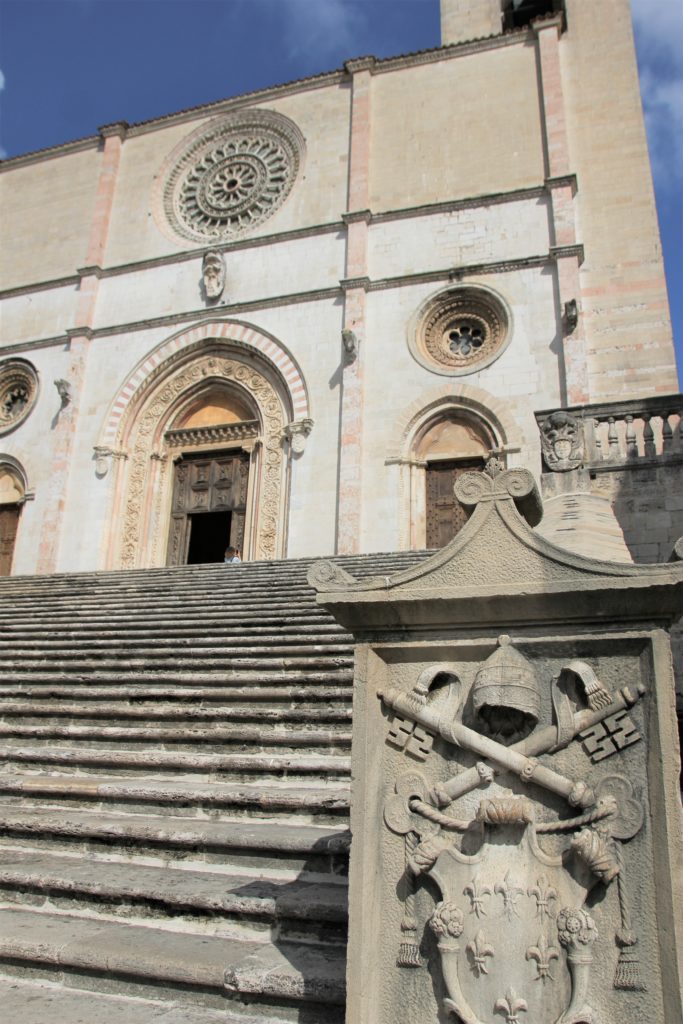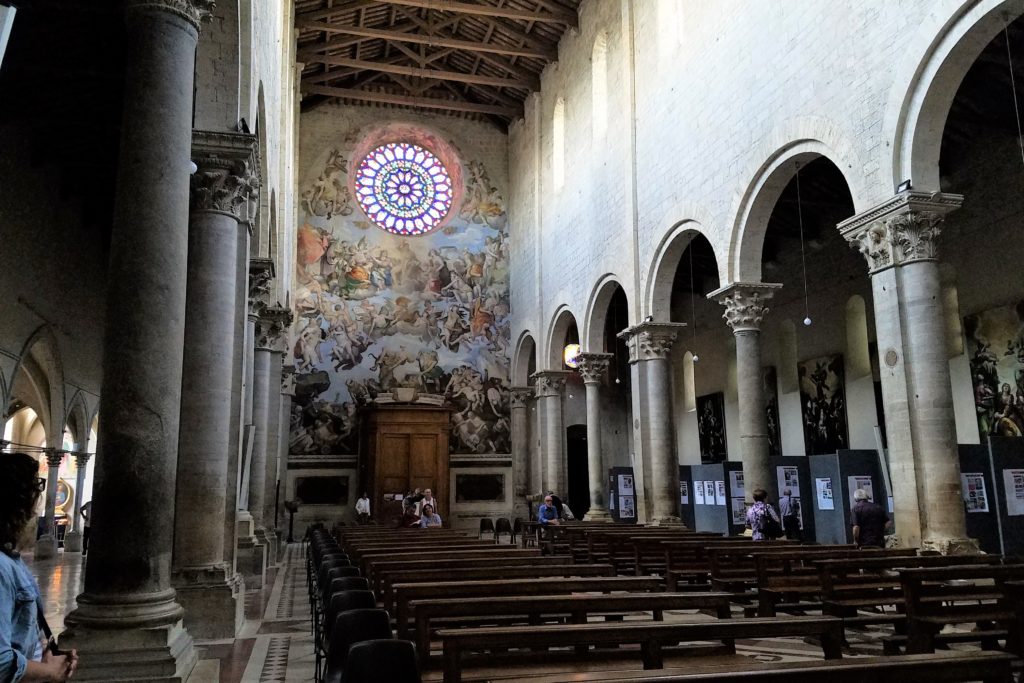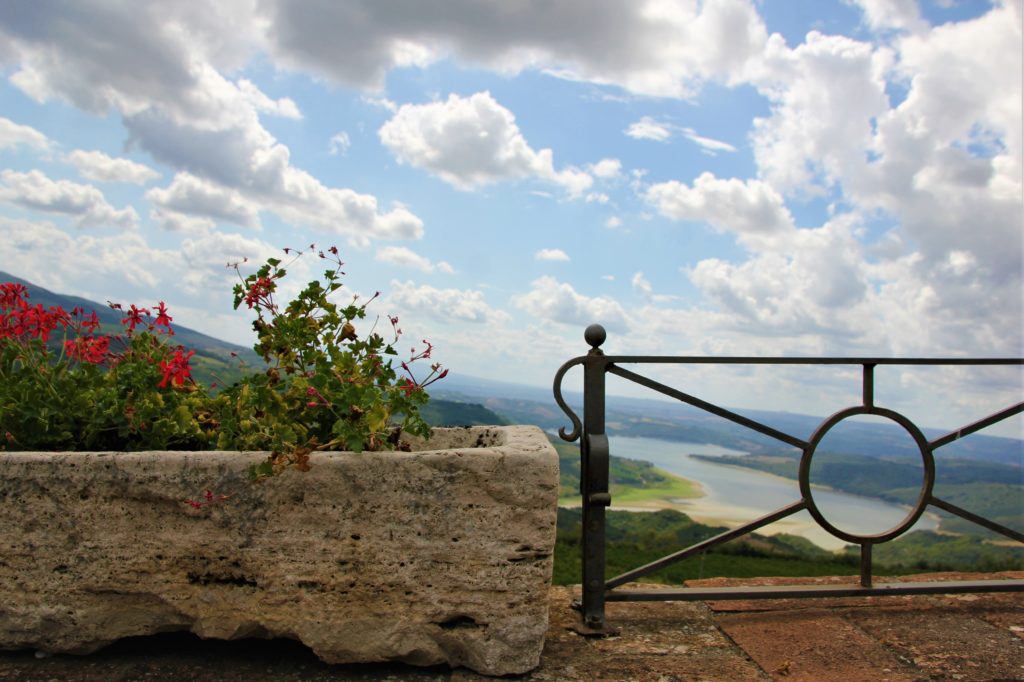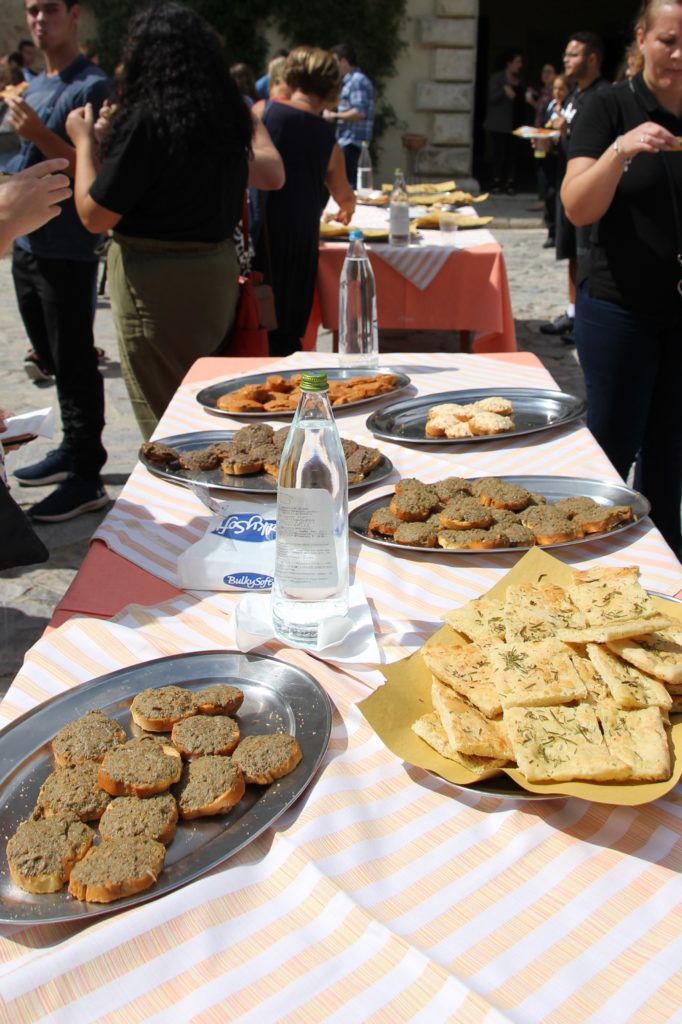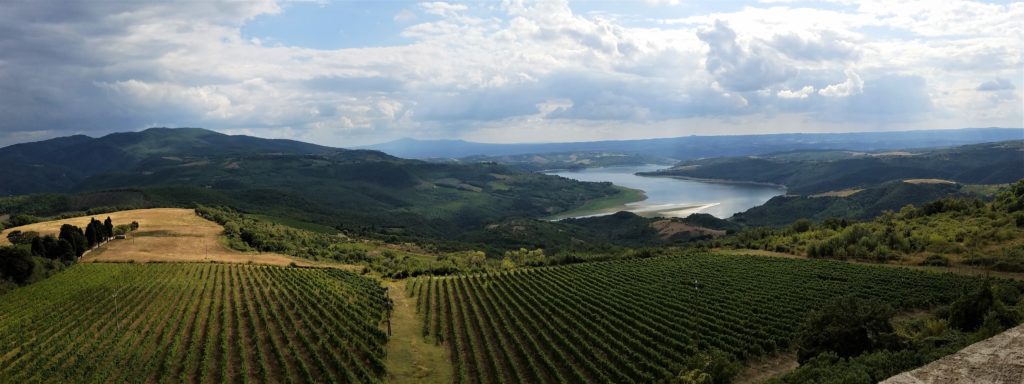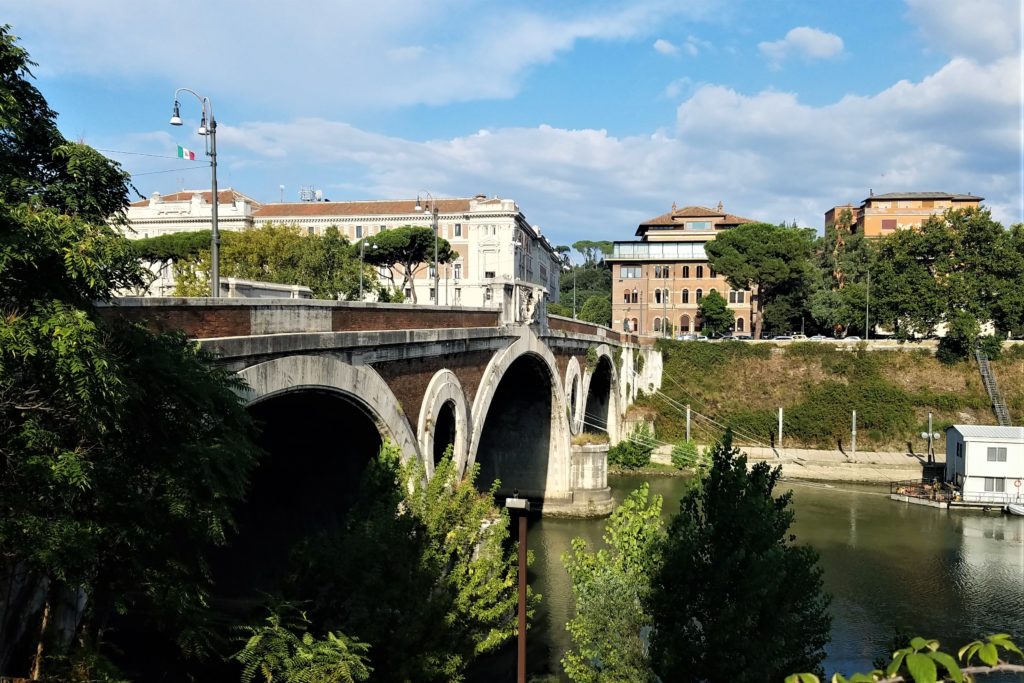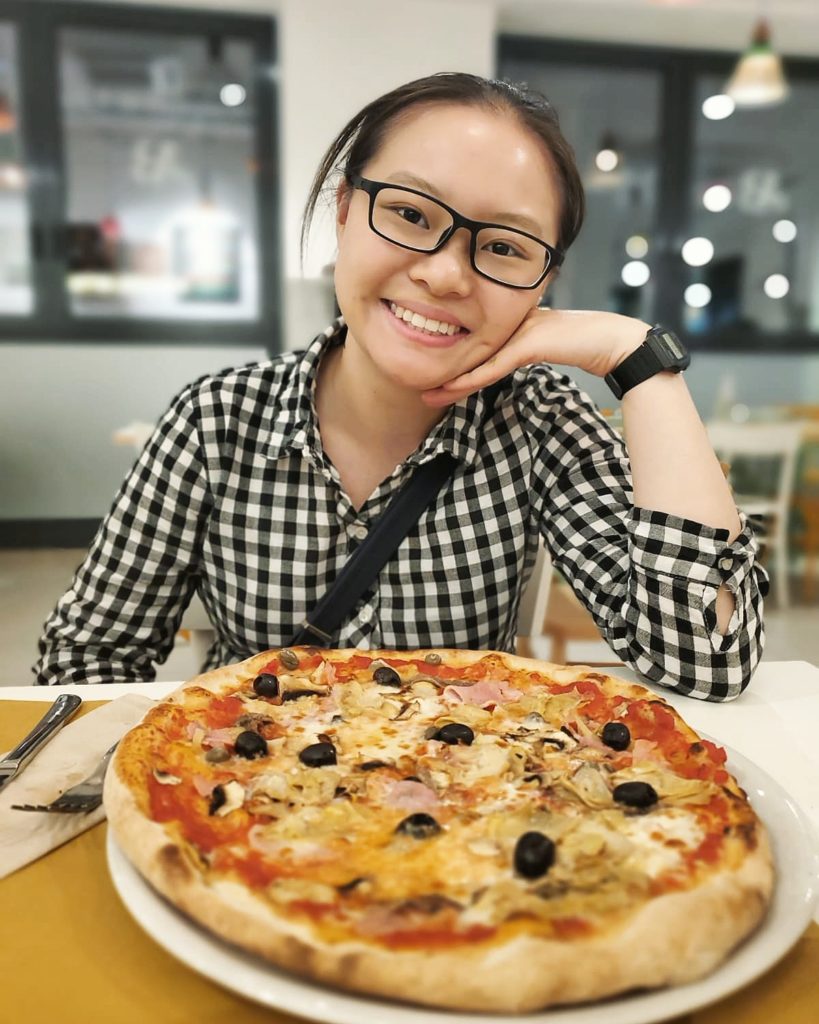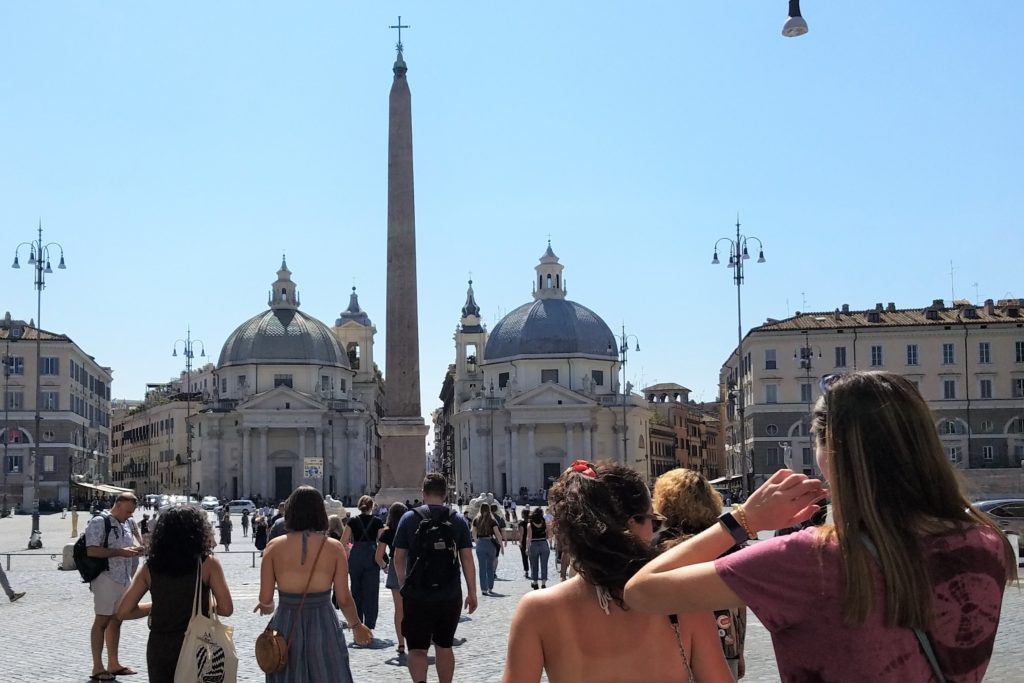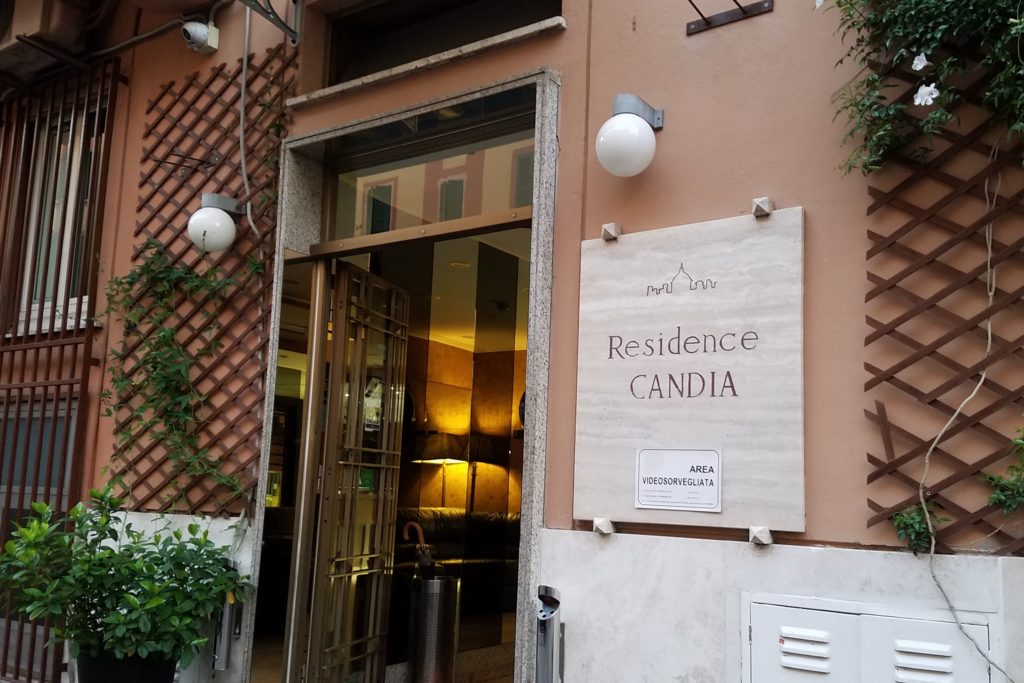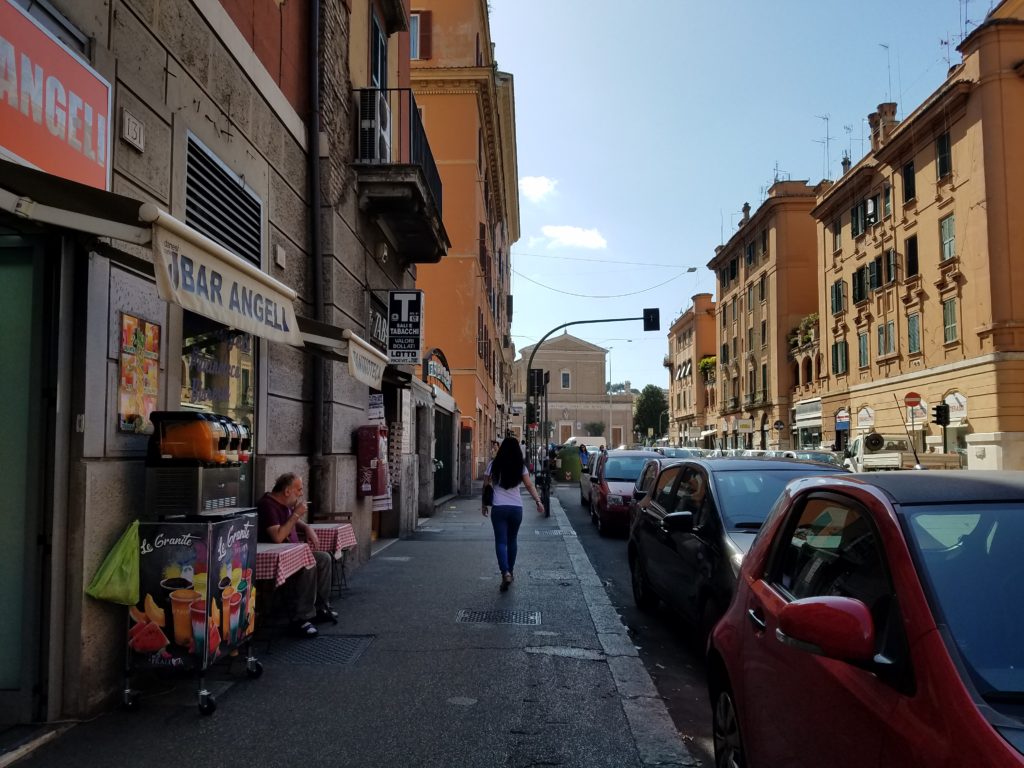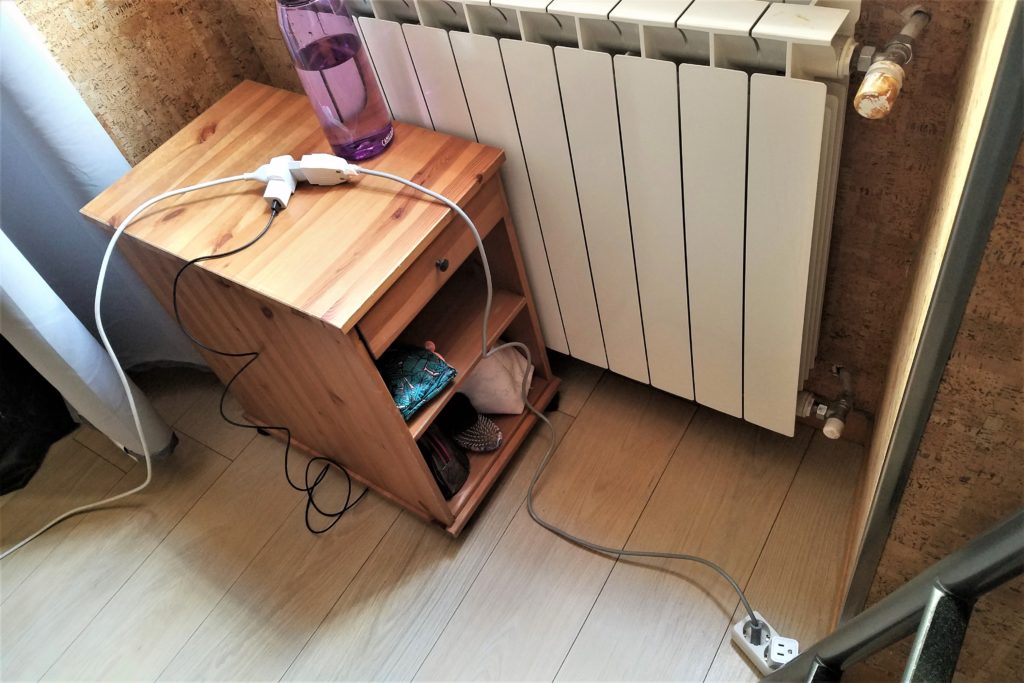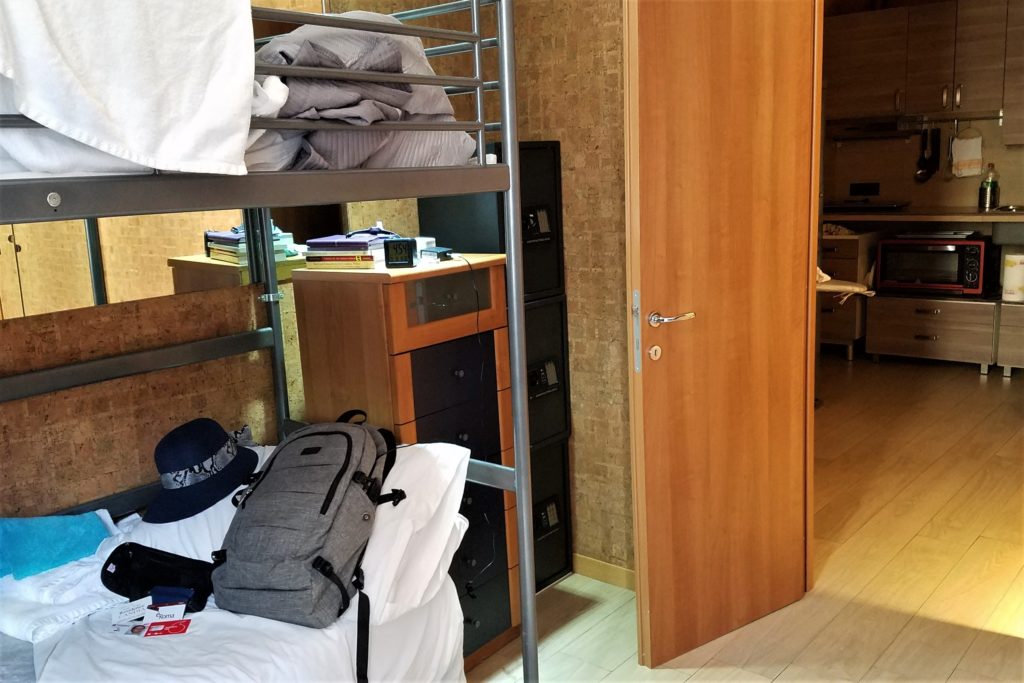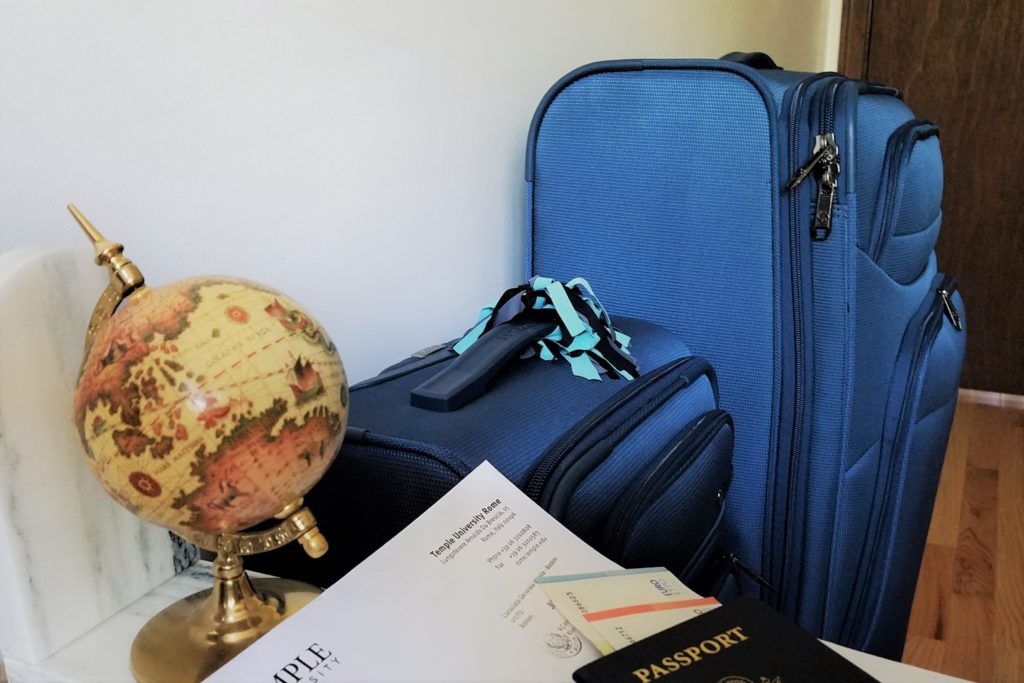Ever since I was in elementary school, I loved going on field trips. Museums are some of my favorite destinations in any place, and I was excited to explore one on my first class trip of the semester!
I usually have three-hour lectures on Thursday mornings, but this Thursday, I went to the Museo Nazionale Etrusco di Villa Giulia (National Etruscan Museum of Villia Giulia) with my classmates. I am taking a class called “Race in the Ancient Mediterranean” this semester. I am excited to be studying the Classics in Rome, and I have been looking forward to this course since I first learned about it while applying to study abroad.
My classmates and I met our professor at the start of class and walked ten minutes to the museum. Temple Rome’s campus is in a very convenient spot – not too far from cultural gems such as the Villa Giulia!
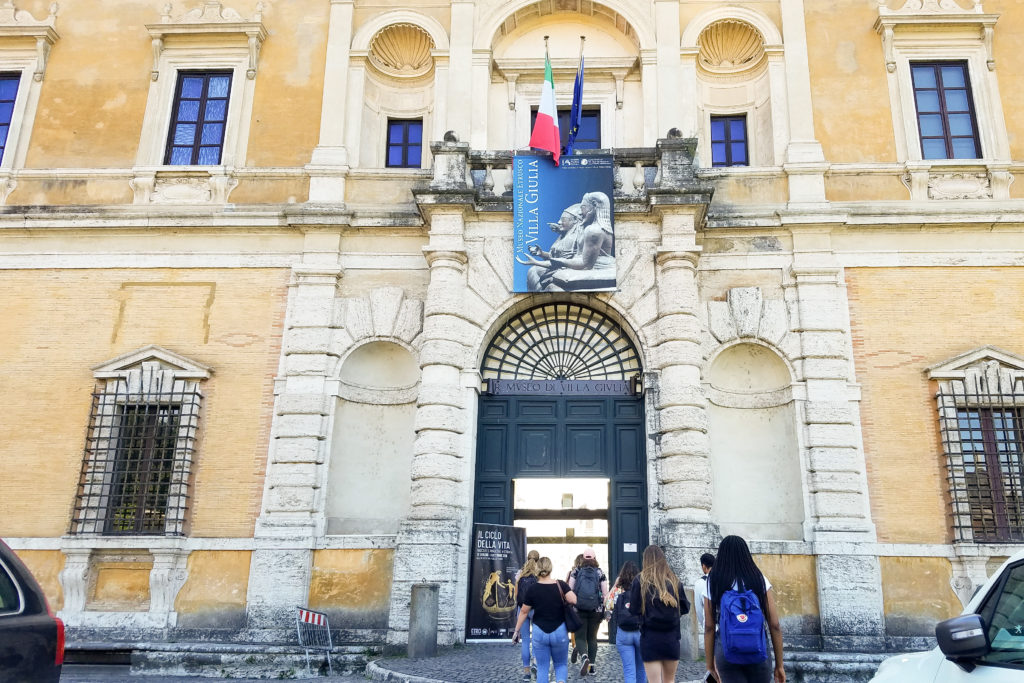
The Villa Giulia was built as a suburban residence for Pope Julius III in the 16th century. The Via Flaminia (which is the long road behind Temple Rome and very close to the museum) was an ancient street that lead into the city, but had some parts of it built in rural areas. The Villa was meant to be a comfortable, colorful dwelling away from the chaos of downtown Rome for the Pope.
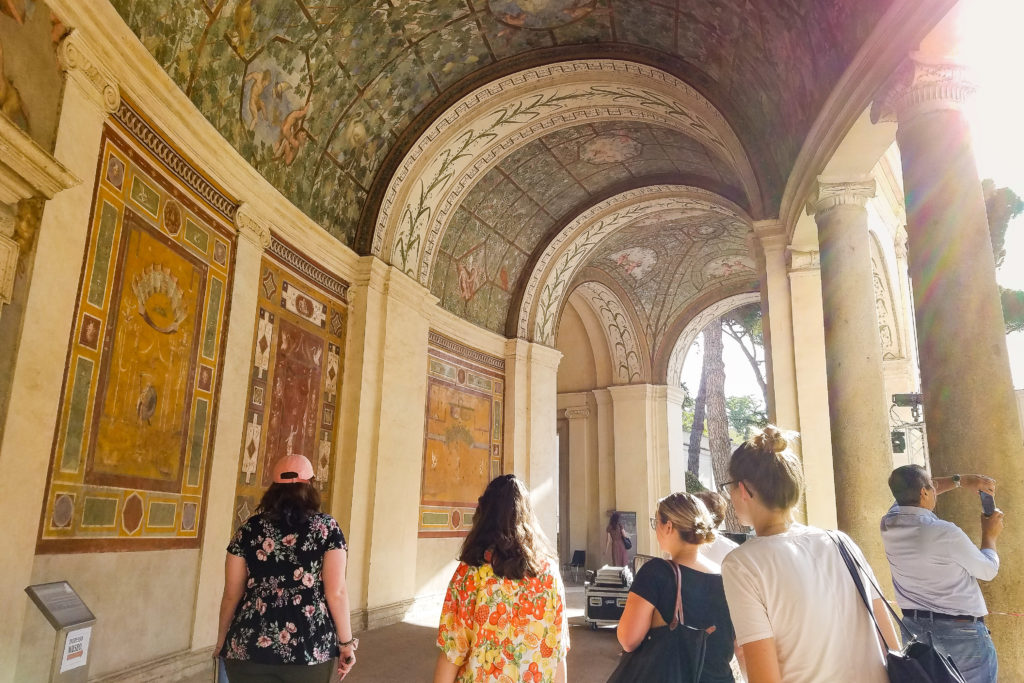
However, the pope’s palace on the Via Flaminia was reclaimed by the state and repurposed into a museum for artifacts attributed to the Etruscans, an ancient people who lived in central and northern Italy before Rome was founded. The land they cultivated was called “Etruria” and spanned from the Arno River in the north (around where Florence is today) to the Tiber River in modern Rome.
Their civilization was a major independent power from the 8th to the 6th centuries B.C.E., but the cities were scattered and never unified into what we might consider a “nation” today. They were eventually “Romanized” and fully absorbed into the Roman civlization by the 2nd century B.C.E.
Many major geographic features of Italy are named after significant aspects of the ancient Etruscan civlization. The body of water to the east is the Adriatic Sea, named after the ancient port of Adria in the northeast, and the western sea is the Tyrrhean Sea, which comes from Thyrrenoi, an ancient Greek word used to describe the Etruscans in the context of piracy (a negative stereotype the ancient Greeks and Romans held about the people). The Romans called the Etruscans the Tusci, which is where the modern region of Tuscany gets its name. The Etruscans themselves, however, called themselves the Rasenna.

After looking at the map and discussing the possible oriental (i.e., from Asia Minor, where modern-day Turkey is today) origins of the Etruscan people and their culture, we looked at ancient Etruscan artifacts. Many of the objects on display come from tombs, which were sealed after funerals and kept away from corrosive elements outside of the sites.
Wealthier Etruscans could afford more lavish grave goods such as chariots and intricate bronzework for their tombs. Some rich families even buried their dead with ancient Greek pottery, which was highly-prized by the Etruscans. There was a lot of interaction with the ancient Greeks through trade. Ancient Athens in particular benefitted exchanging pottery for goods from the mineral-rich Etruria.
The Etruscans had their own special type of pottery called “bucchero” (a Portuguese term that does not have origins in the ancient world, interestingly enough!) that saw vases turn black in the kiln, but the reddish-orange vases from Greece were especially valuable. Along with pottery, the ancient Greeks also had an influence on Etruscan religion, which involves the worship of deities similar to those from ancient Greece. The imagery decorating the traded goods is a sign of cultural exchange in the ancient world.
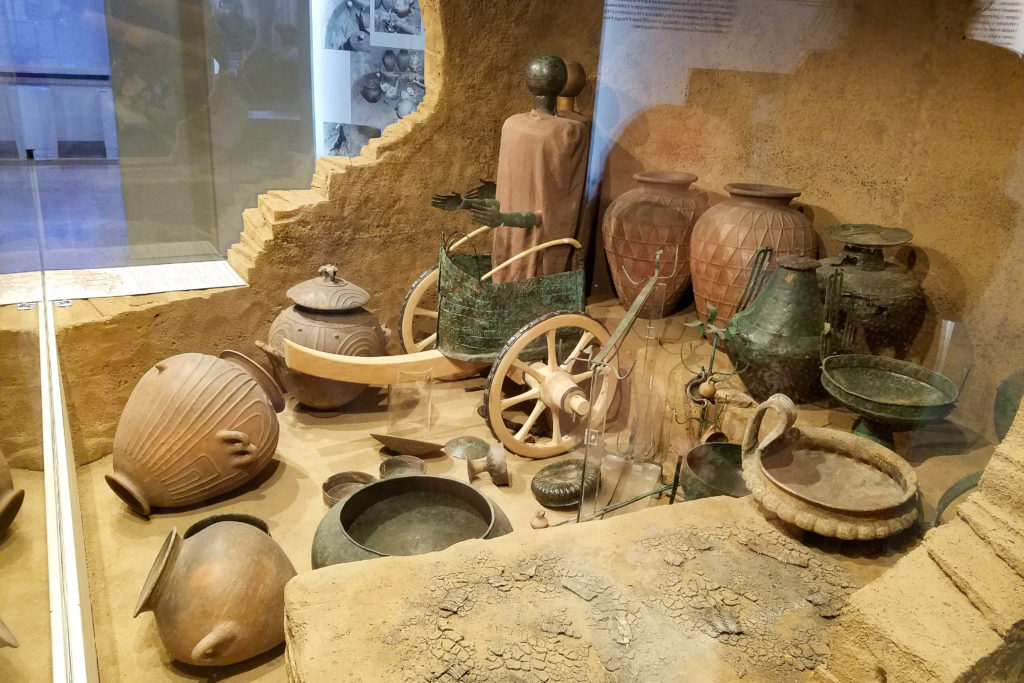
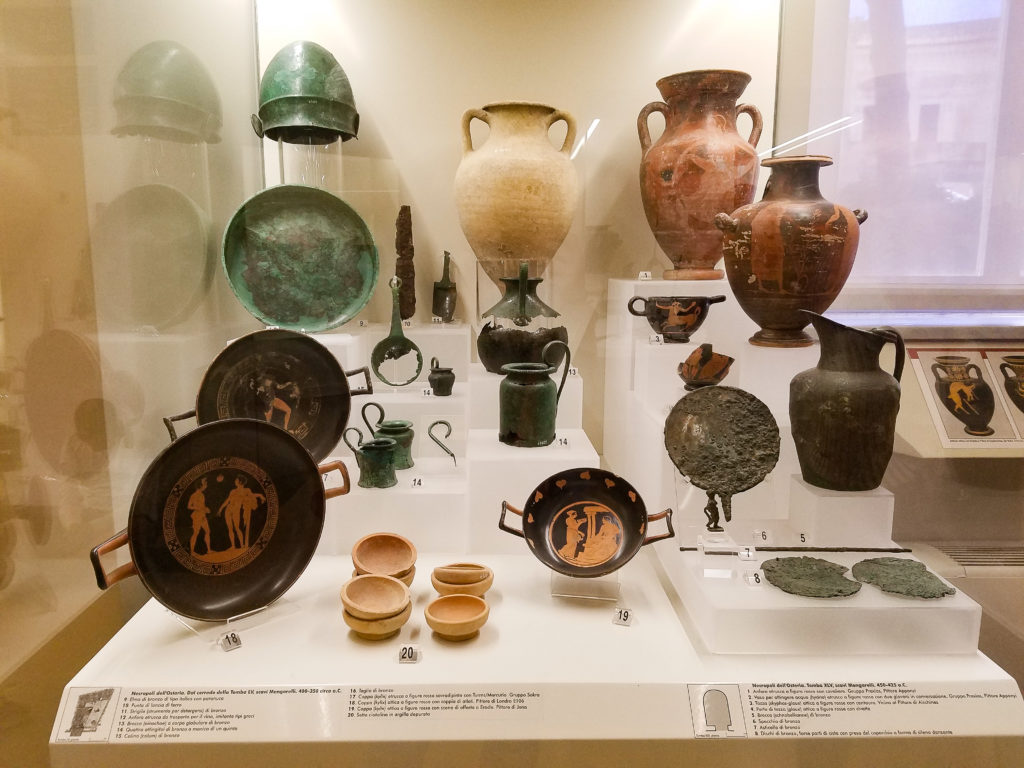
In the basement of the museum are more reconstructed tombs, this time from specific burial mounds called tumuli. I’m fascinated by how the archaeologists and curators managed to recreate the atmosphere and setup of a tomb outside of Rome in a modern museum setting. Walking into these reconstructions is like walking into the past. Only the past is ageless, with how the recreations are displayed today.
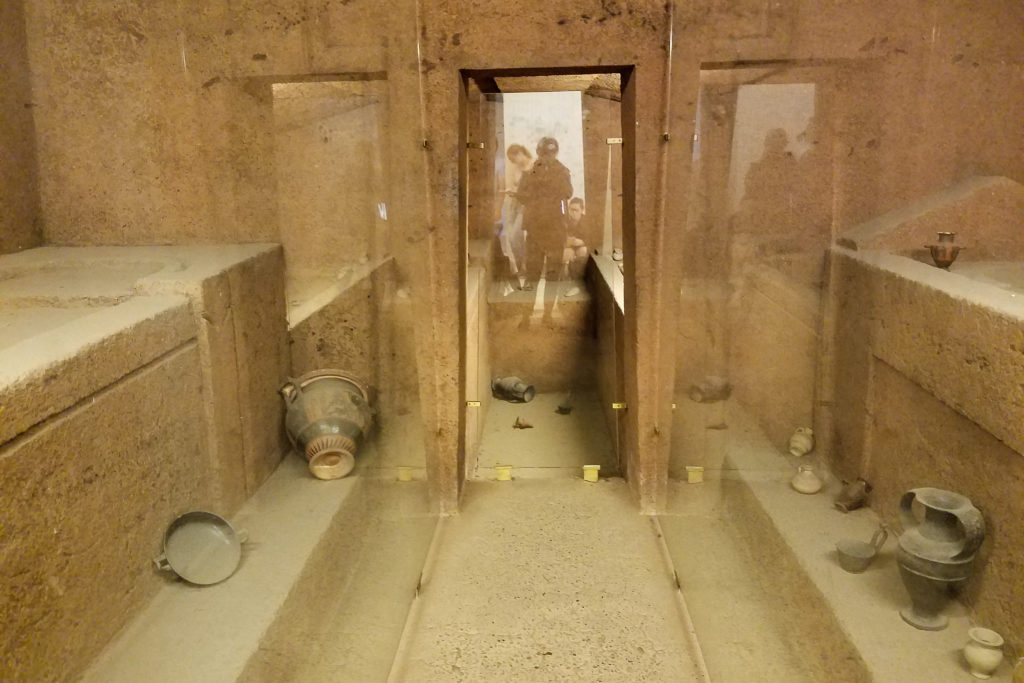
Through a brief lecture on artwork in tombs, I learned that death was not necessarily a dismal time of grief. Some tombs had lively patterns and colors painted in them, with scenes of pleasure such as feasting and other cheerful social events meant to celebrate the life of the deceased. What an interesting combination of contrasting concepts!
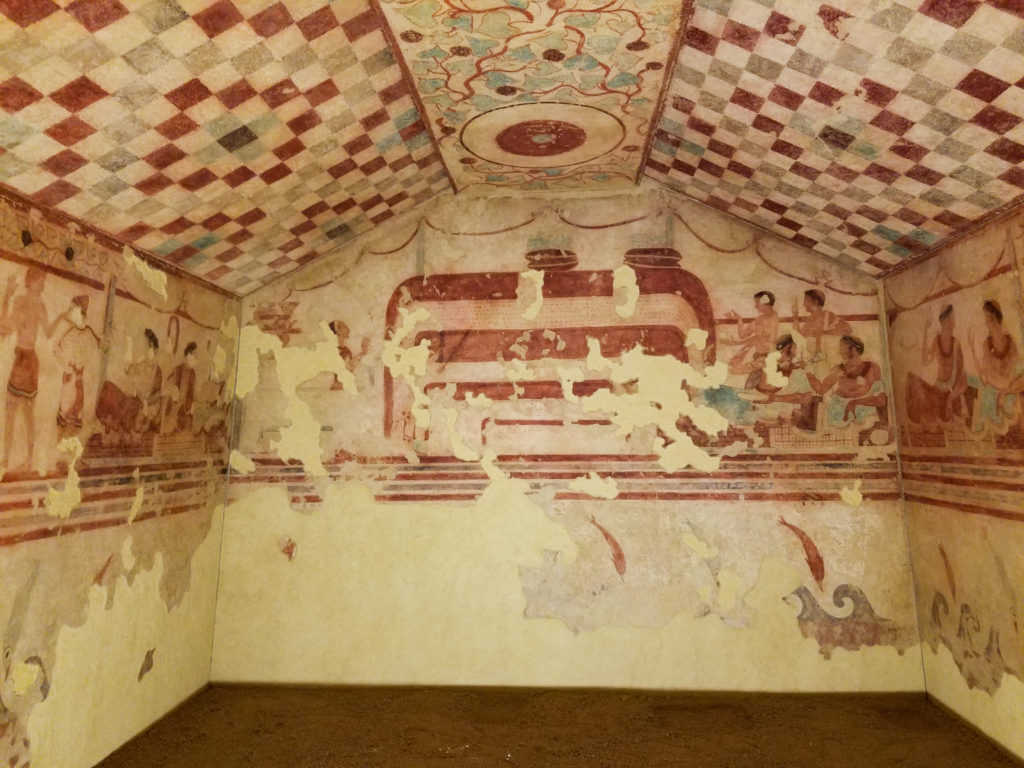
At the end of the hallway on the first floor is a famous artifact in Rome: the Sarcophagus of the Spouses. The terracotta piece is modeled after a sculpture and portrays two figures, one male and one female, reclining. They are dressed in traditional clothing and wear the enigmatic “Archaic smile” that was common in art from the 6th-century B.C.E. The stylized features and outfits imply that there was artistic influence from Asia Minor.
The Etruscans were very different from the early Romans in the region in not only the places they drew inspiration from, but also in their social structures and cultural norms. The Sarcophagus of the Spouses is significant in that it exemplifies the trope of representing male and female figures together: Etruscan women joined men in pleasurable social events such as symposia (similar to the ancient Greek symposium, except in Greece, only men took part in the activity).
Early Greeks and Romans had a negative view of the Etruscans because they saw their women as “too free.” Ancient Greek and Roman women were excluded from social events; a woman who was present at a symposium was never a wife of one of the men at the event. Women at such events were dancers or learned conversationalists who entertained guests. None of them were related to the men at the symposium.
The Sarcophagus of the Spouses in the Villa Giulia is one of two of its kind: the other existing piece is in the Louvre in Paris. I think I might go see its counterpart in France one day. I’m curious to compare and contrast the two myself.
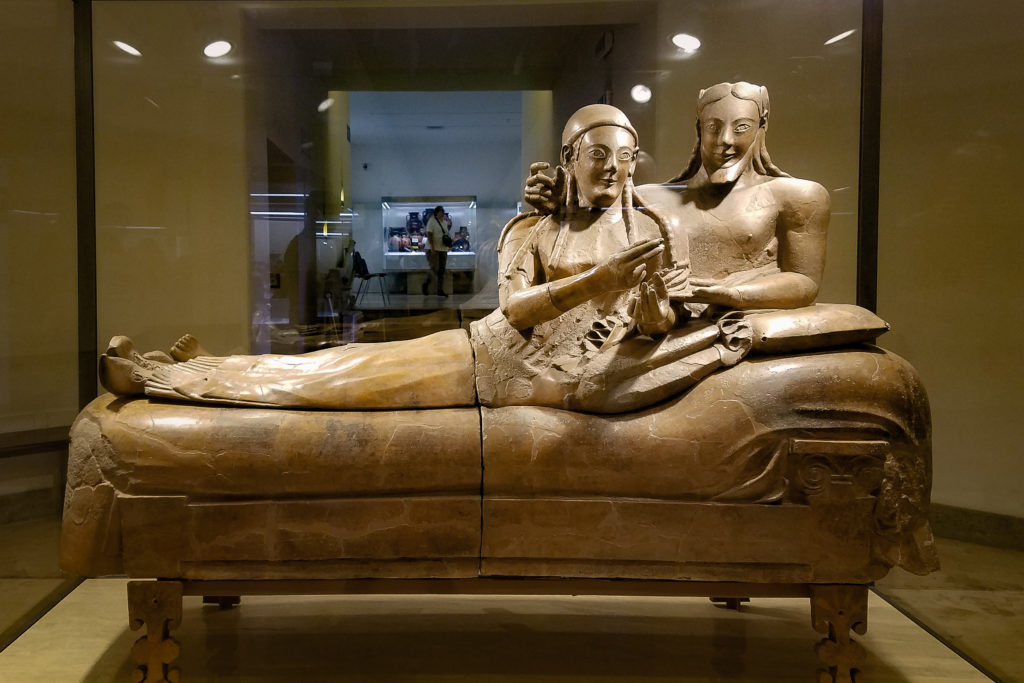
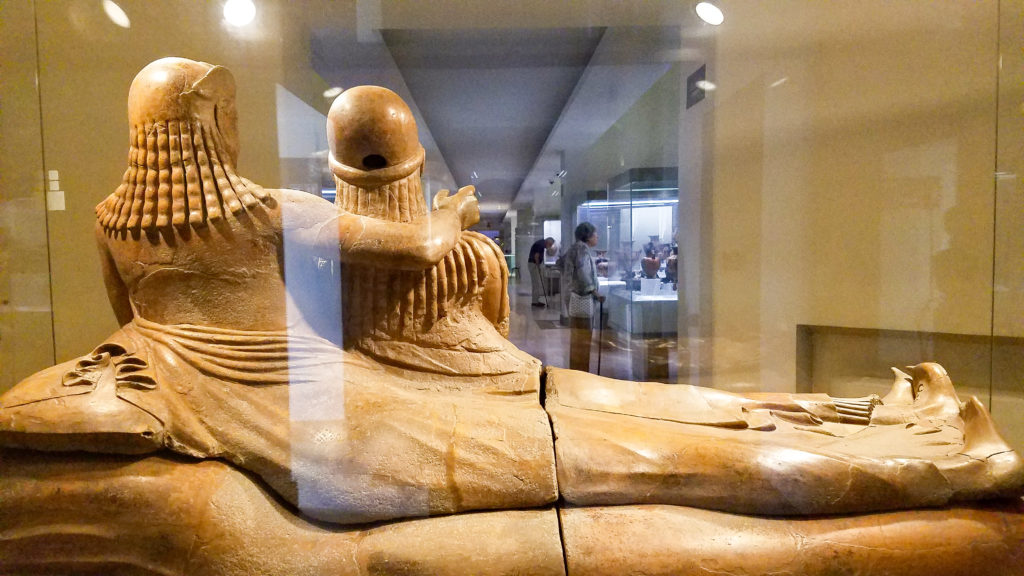
I went outside of the exhibit halls during a short break and looked at the nymphaeum, an open area resembling a grotto, where nymphs would be found in ancient mythology. I was stunned by the beautiful mosaic on the ground surrounded by shrubbery and complex columns and arches. What a sight!
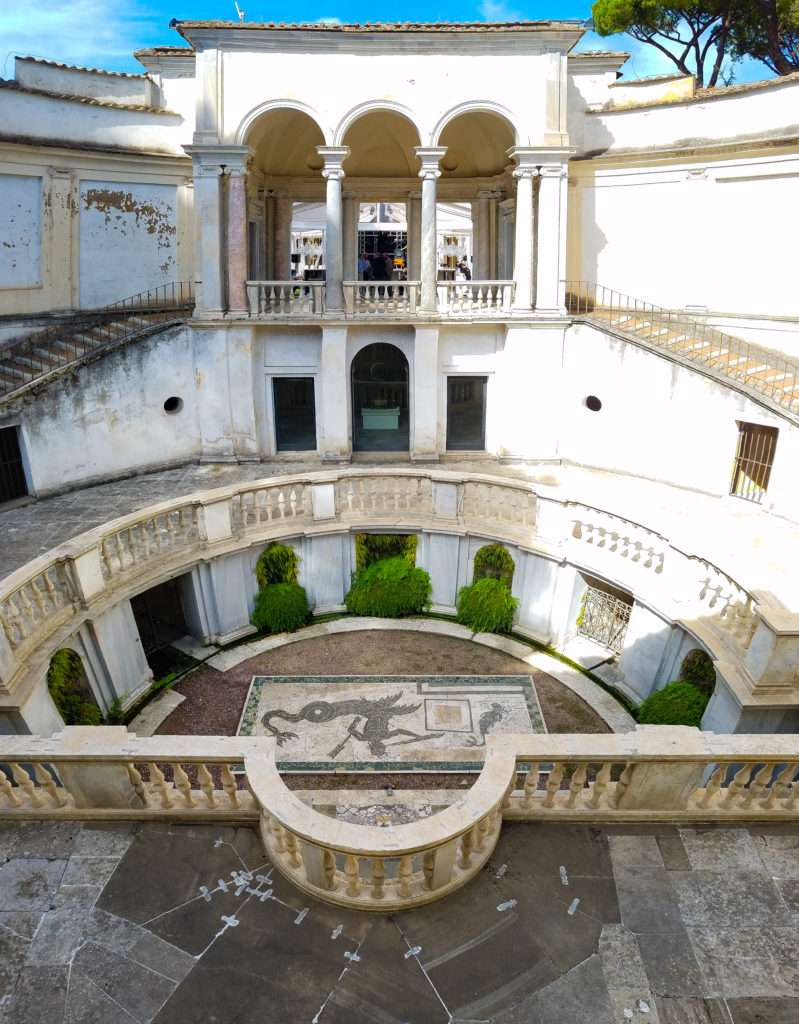
The final parts of our museum visit took place in the halls of Greek vases behind the Sarcophagus of the Spouses before we headed upstairs. On the second floor is a wide exhibit about the ancient Etruscan language. Our professor told us that Etruscan was not like ancient Greek or Latin, which are categorized as Indo-European languages in the linguistics family tree.
However, the ancient Etruscans modeled their alphabet from the ancient Greek one, which in turn was adapted from the ancient Phoenician alphabet. The Latin alphabet, which many western European cultures use today, also comes from the Etruscan alphabet. The challenge lies in not transliterating ancient Etruscan, but instead in identifying the grammar and syntax from the very little the Etruscans left behind in writing. I asked my professor why this is the case, and I learned that because the Etruscans were “Romanized” later on, they adopted and wrote in Latin instead of their former main language.
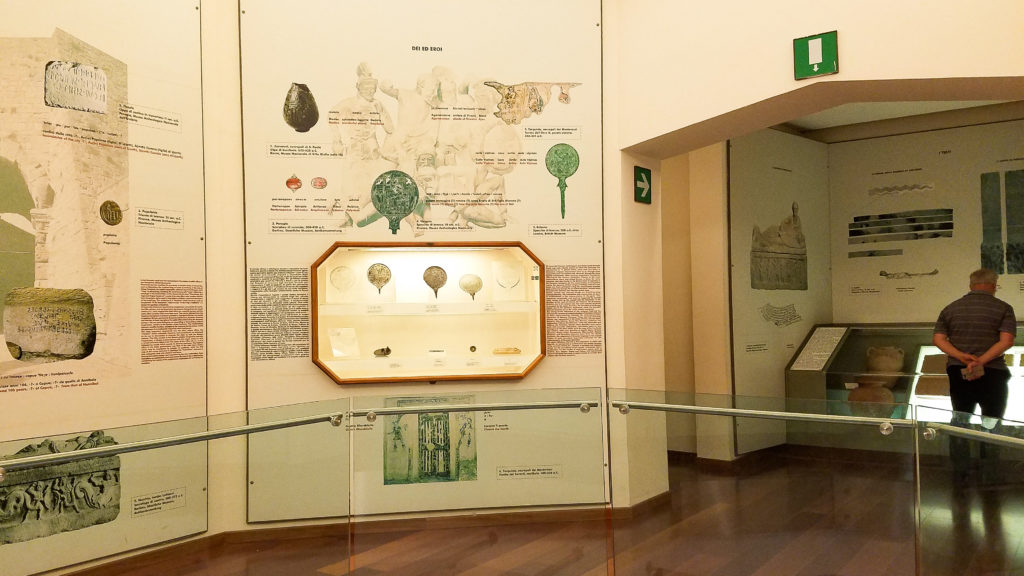
We finished our visit with a discussion about the “contrast” and “otherness” with which the ancient Romans perceived the Etruscans and people who were “not Roman.” The ancient Etruscans were technologically advanced with their craftsmanship compared to other people in Italy in the 8th century B.C.E. and had complex religious rituals. The Romans took their ritual of using animals to fortell omens, whether through searching the intestines and livers of sacrificial animals or watching the flight patterns of birds, from the Etruscans.
Yet the Romans did not want to be as “primative” as the Etruscans, whose art and culture were different from those of other tribes in the area. Etruscan women were seen as “too strong” and “loose” compared to the “proper” Roman ladies who stayed out of social events, and Etruscan men were considered too lavish and “soft” because of a stereotypical tendency toward luxuries like jewerly (a large collection of which was on display in the museum) compared to the “harder” and “proper” Roman men.
This broader contrast in itself was good food for thought as I headed back to campus for my next class. It is fascinating how someone can want to be both like and unlike another who is perceived as “other” or even as a complete opposite. My first instinct was to react with confusion because I initially perceived the concept as a paradox, but after I took my professor’s advice about thinking more deeply about the visit for the next class, I think I’ve learned how to start processing seemingly-contradictory information. I am looking forward to writing my reflection paper about this visit and sharing my ideas in class next time.


